Fusion
Summary
This week, I designed a conceptual rocket model using Fusion 360 as part of my final project exploration. Drawing from my years of experience with the software, I created a detailed, shell-based rocket body with symmetrically patterned fins. The design process helped me reinforce and practice several key CAD features such as sketching, revolving, shelling, appearance application, and circular patterning.
Work Process Detail
Project Setup
- Opened Fusion 360, created a new design file, renamed and saved it in the desired project folder.
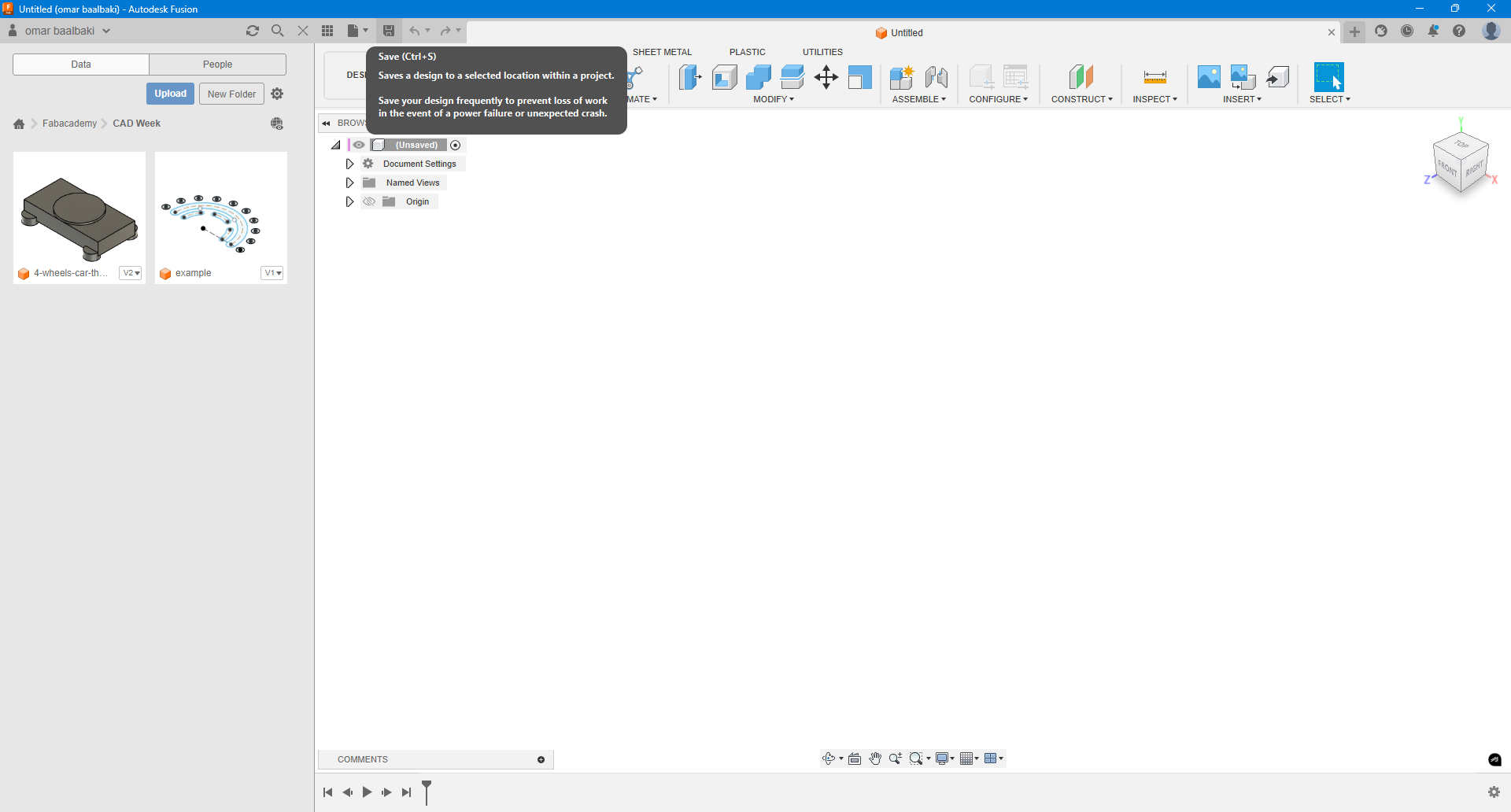
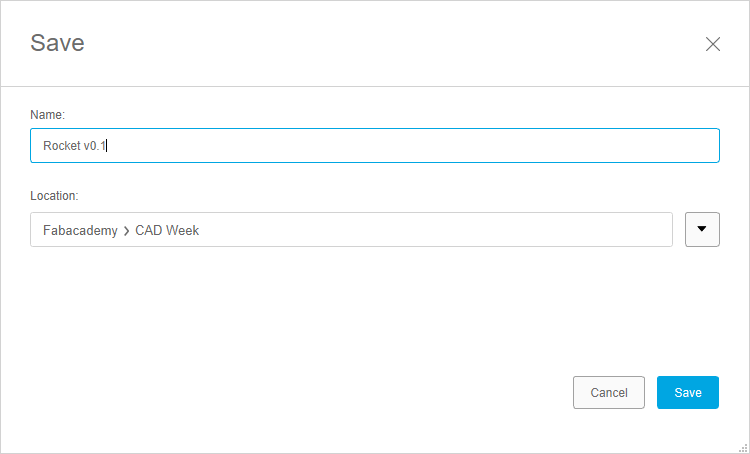
Sketching the Rocket Body
- Began a 2D sketch on the desired plane.
- Drew a rectangle with specific dimensions.
- Drew a circle for the rocket nose and made it tangent to the rectangle using construction lines.
- Used the Trim tool to clean unnecessary sketch lines.
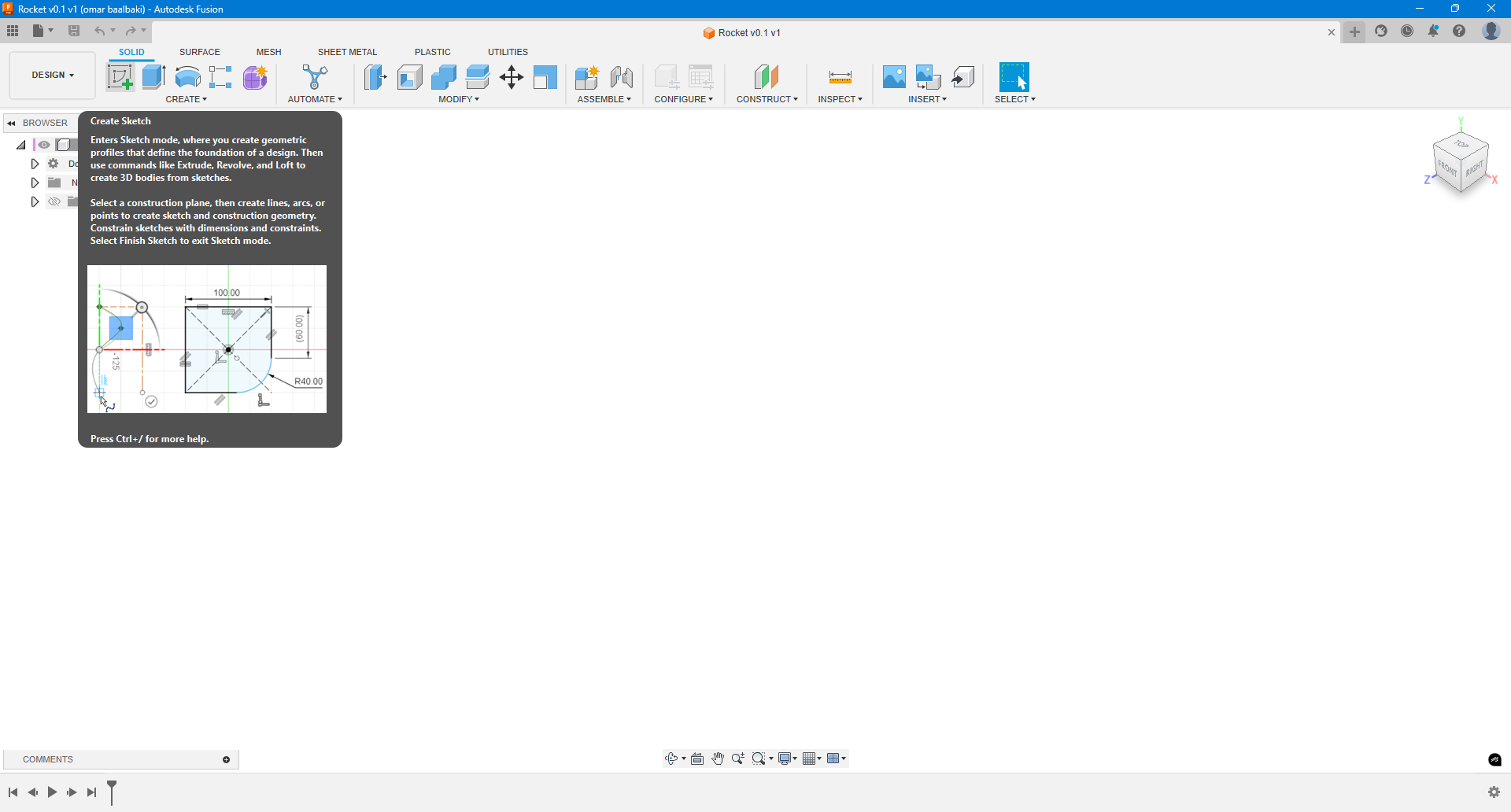

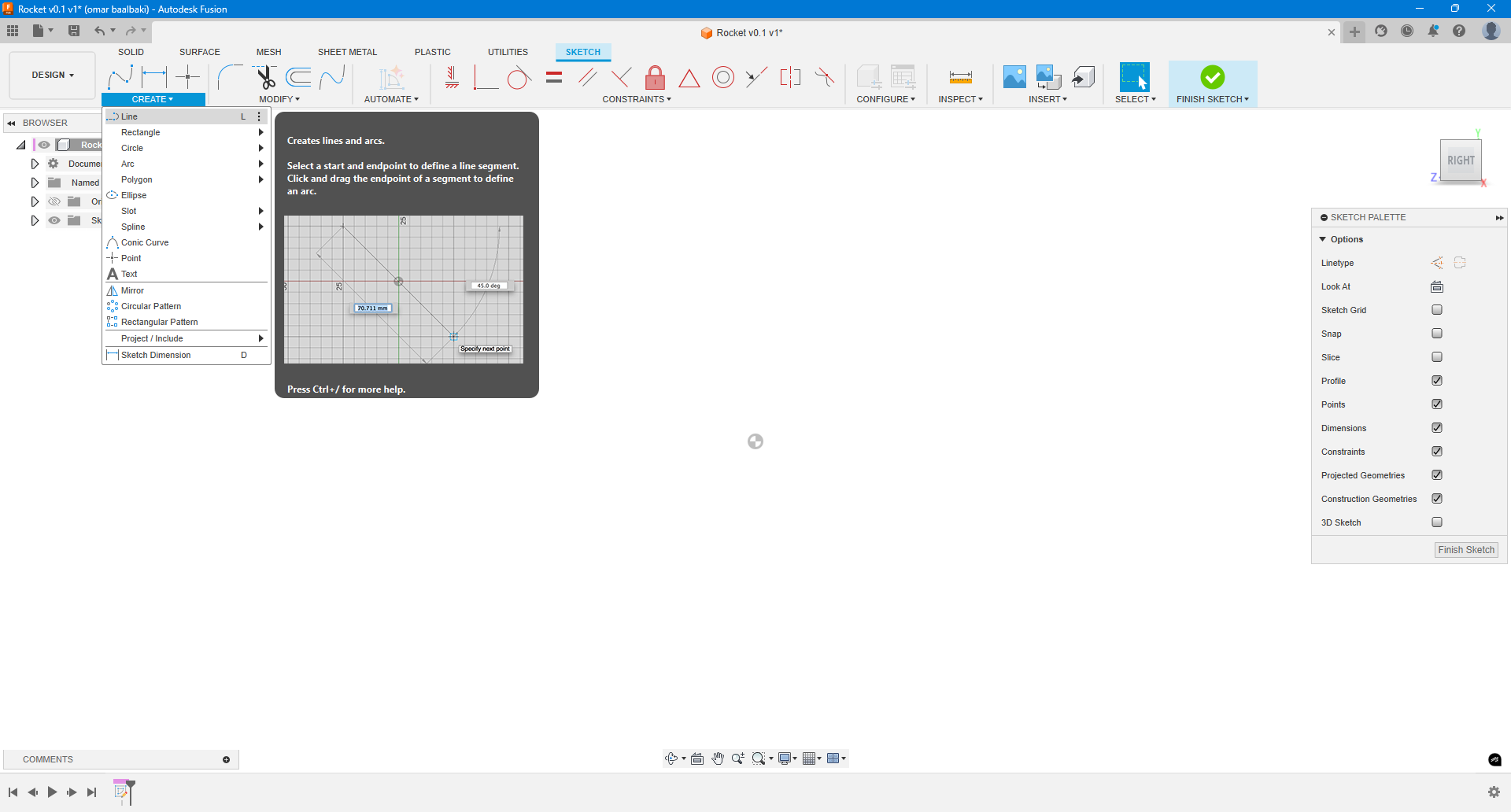
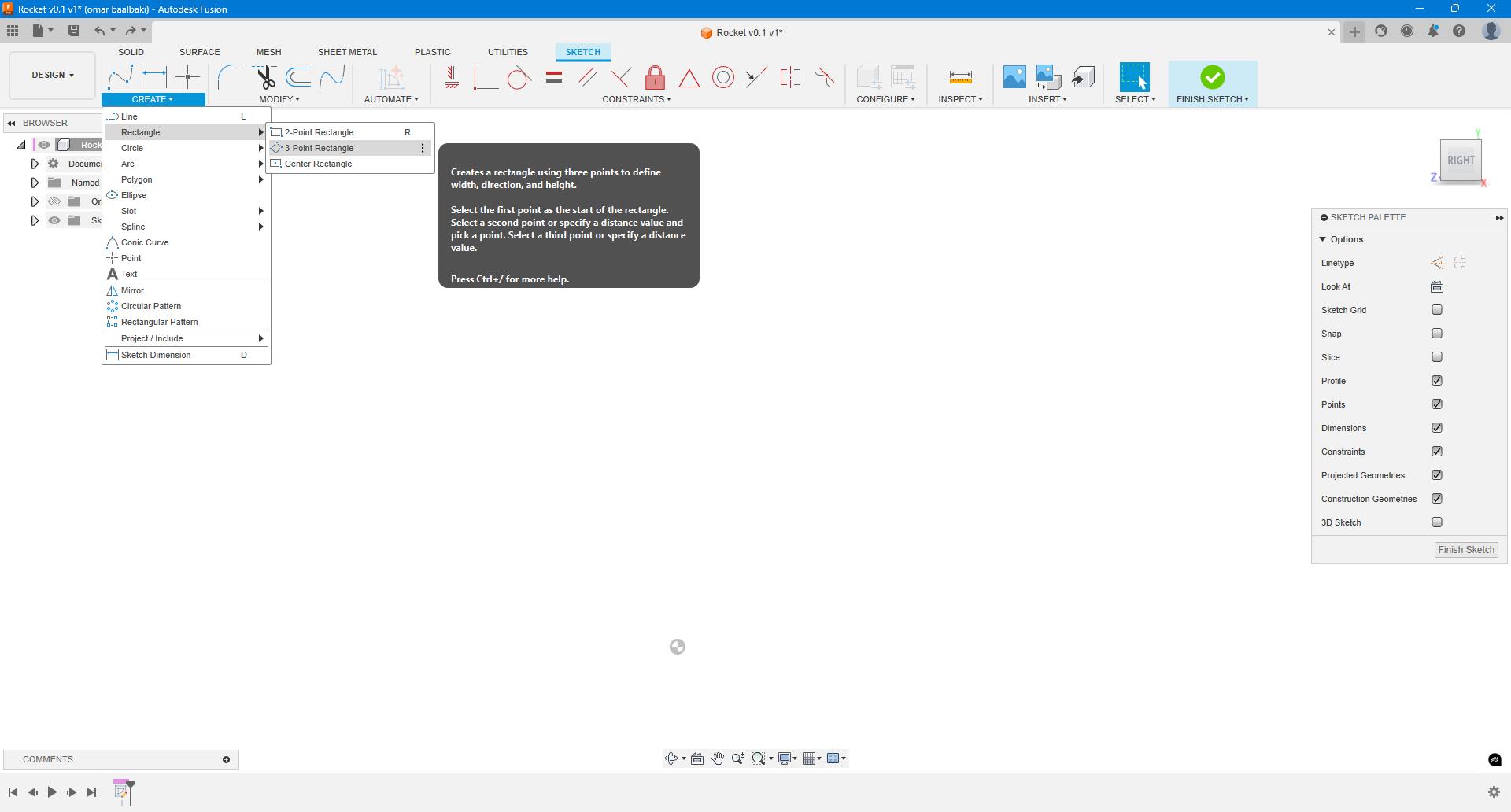
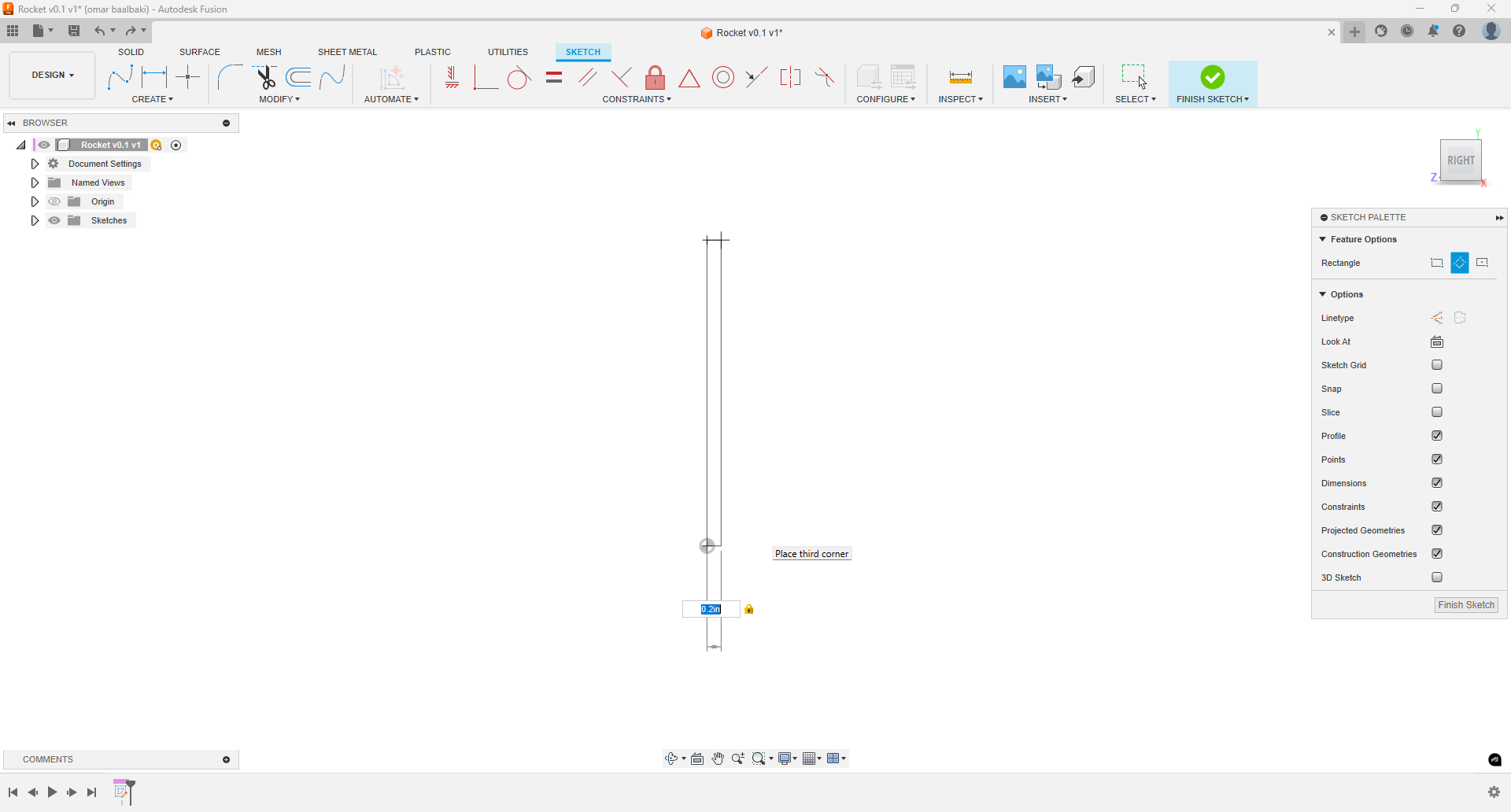
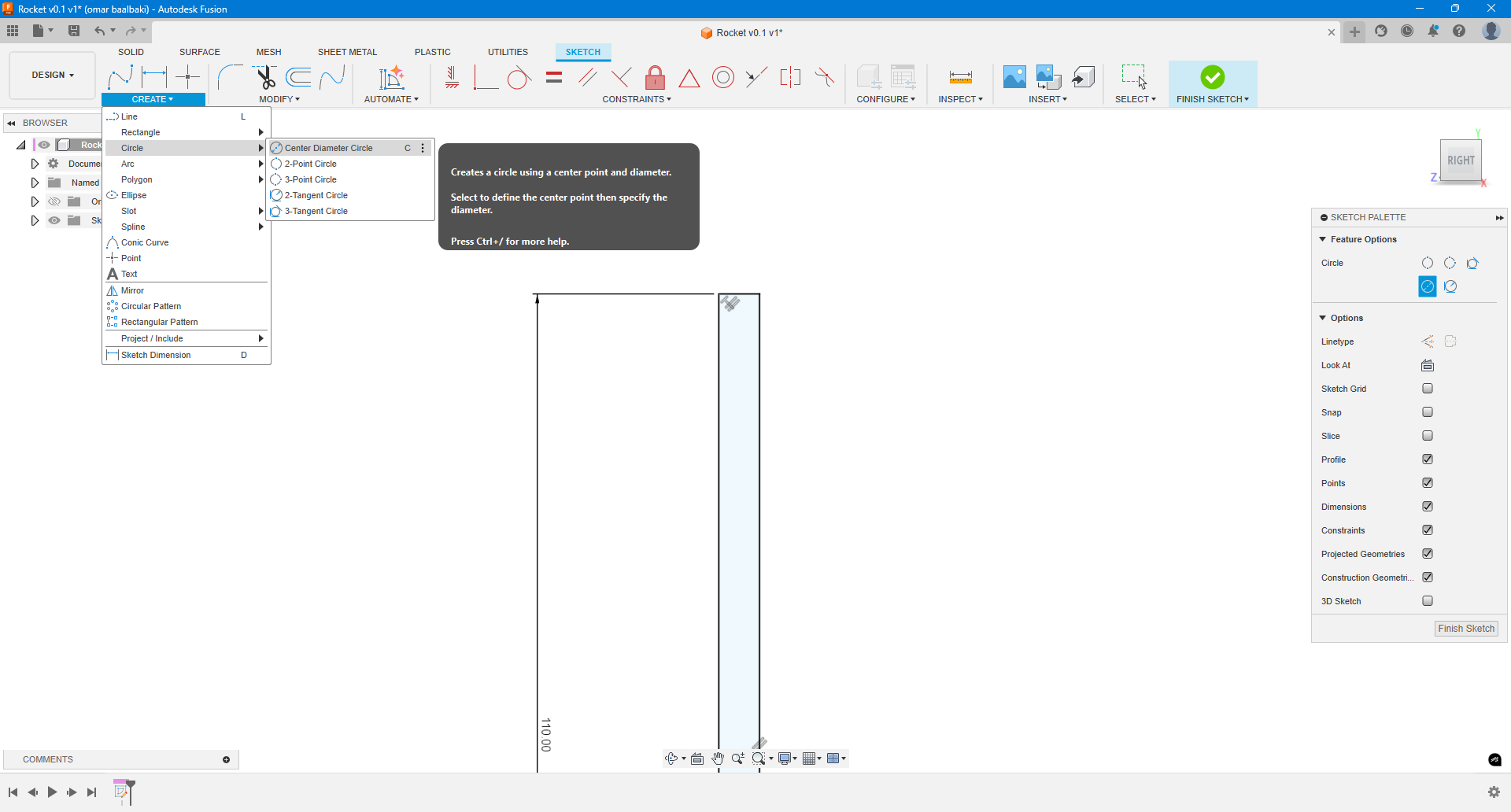

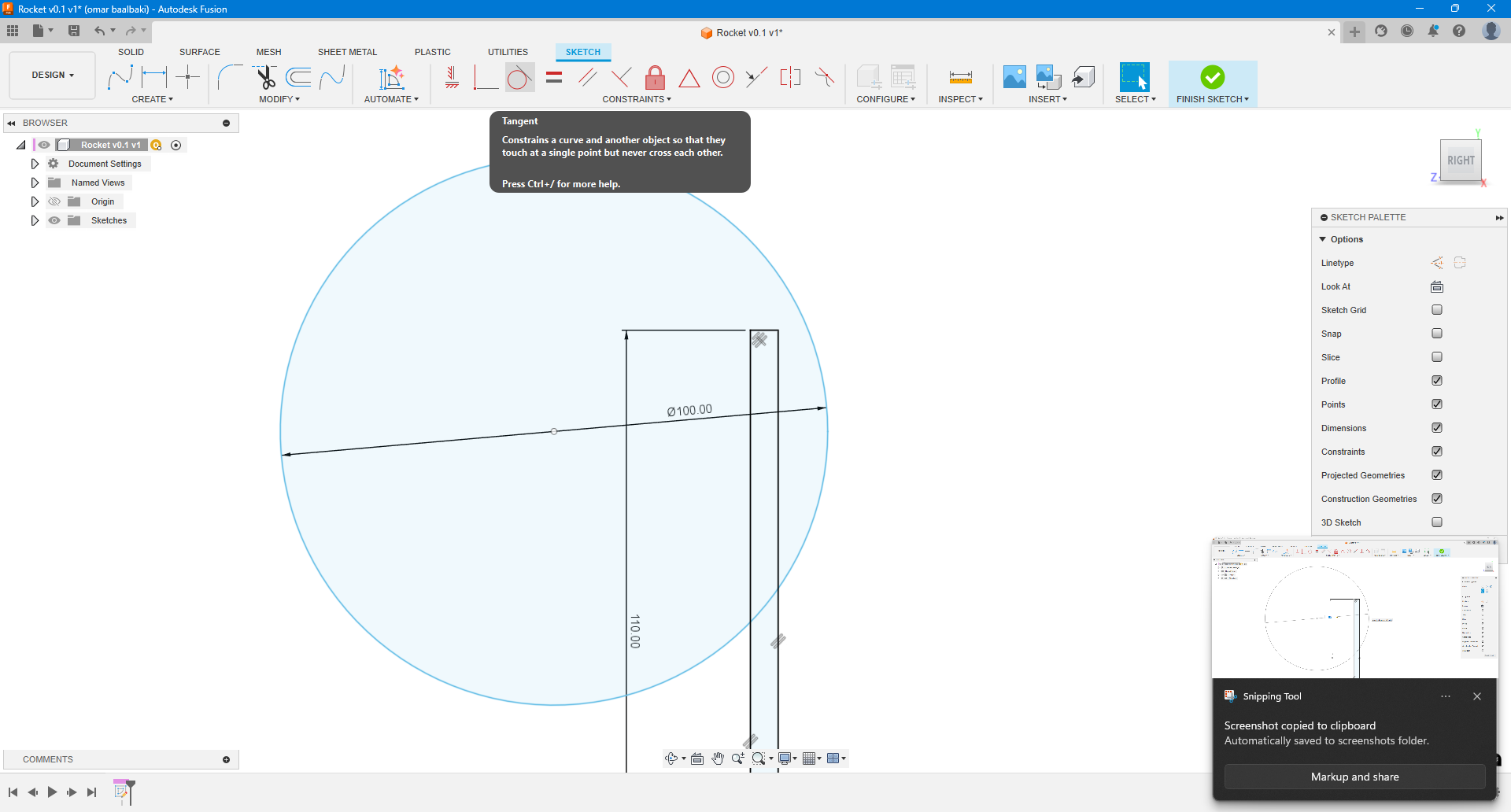
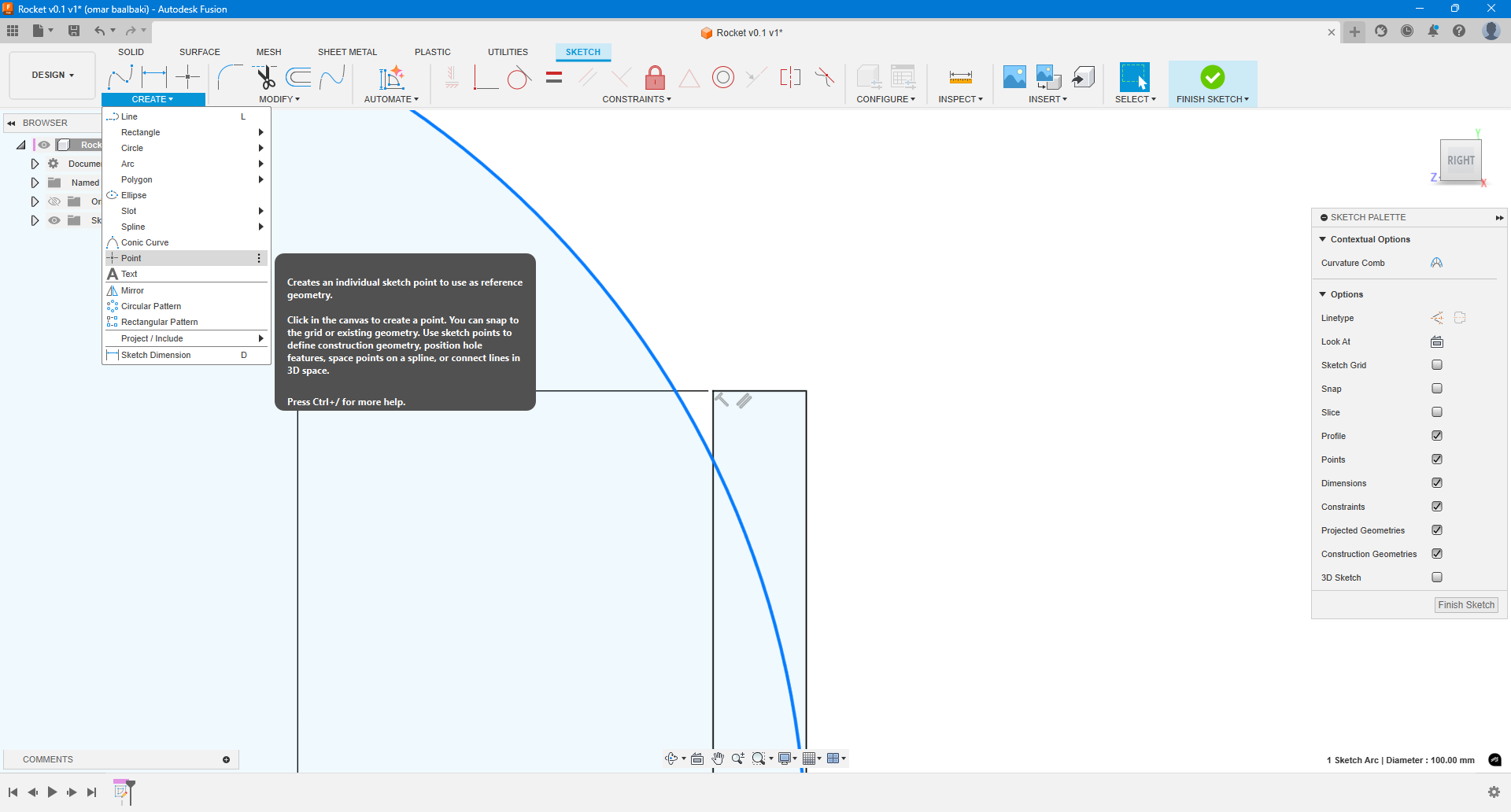
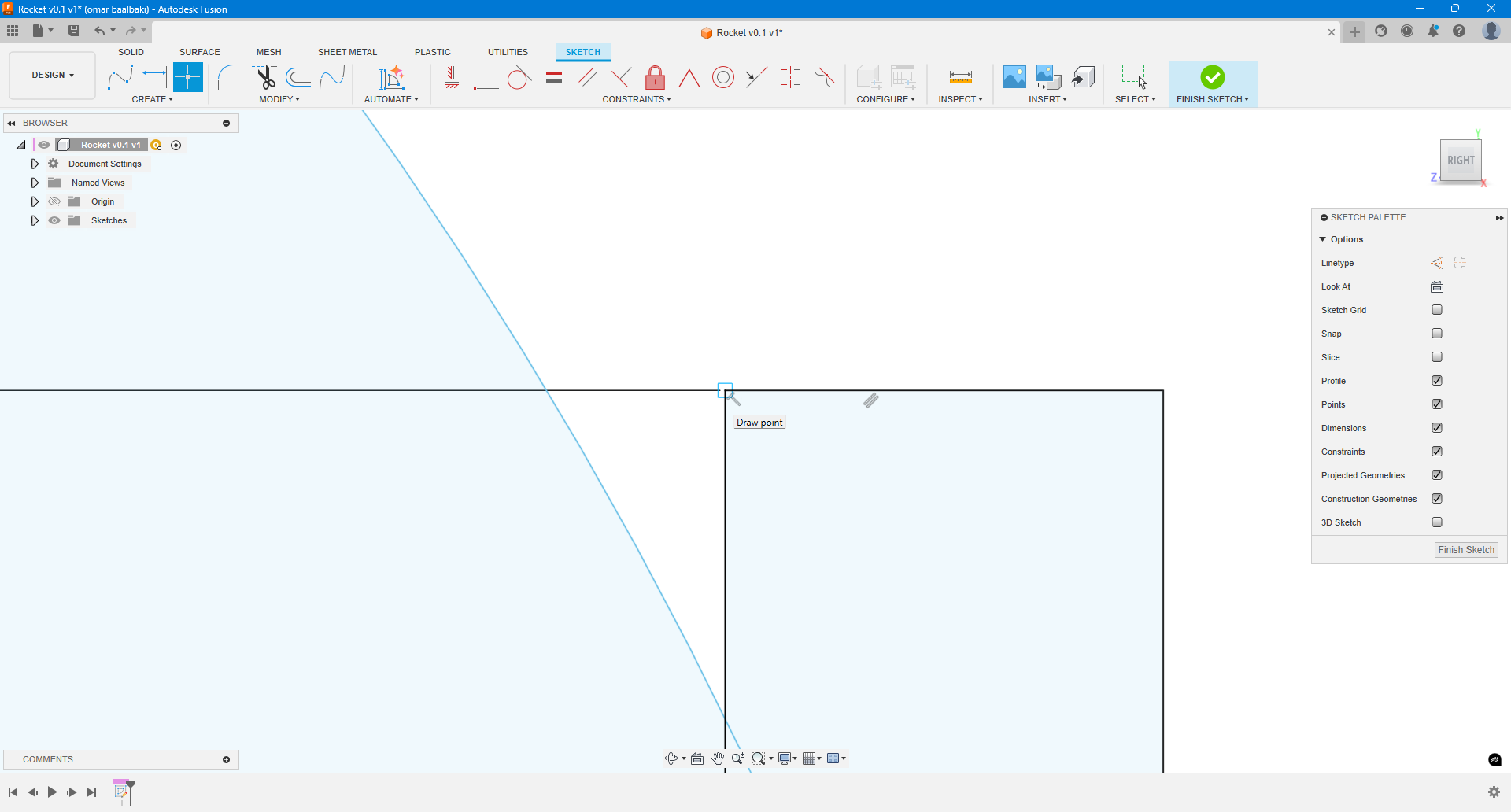
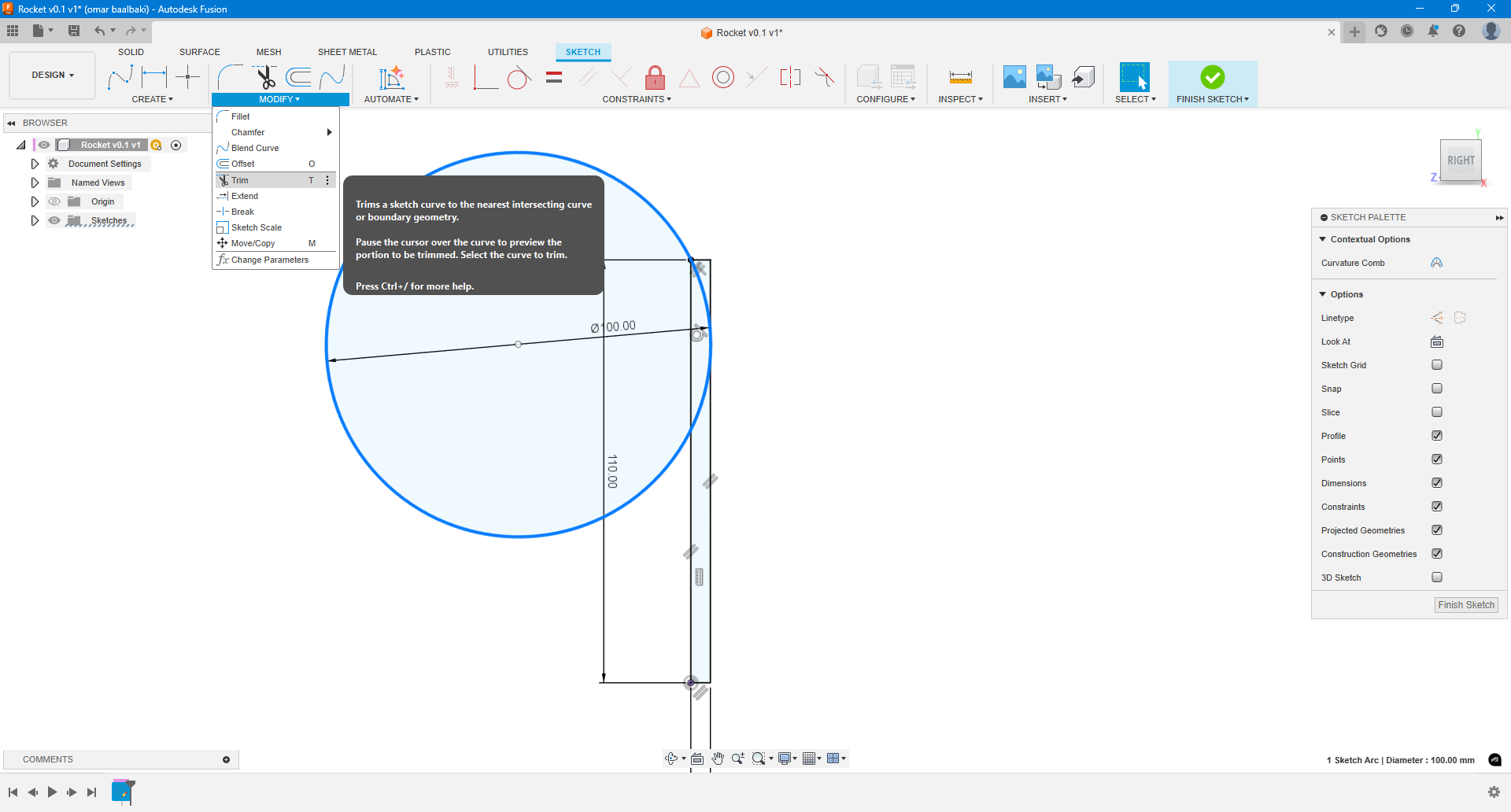
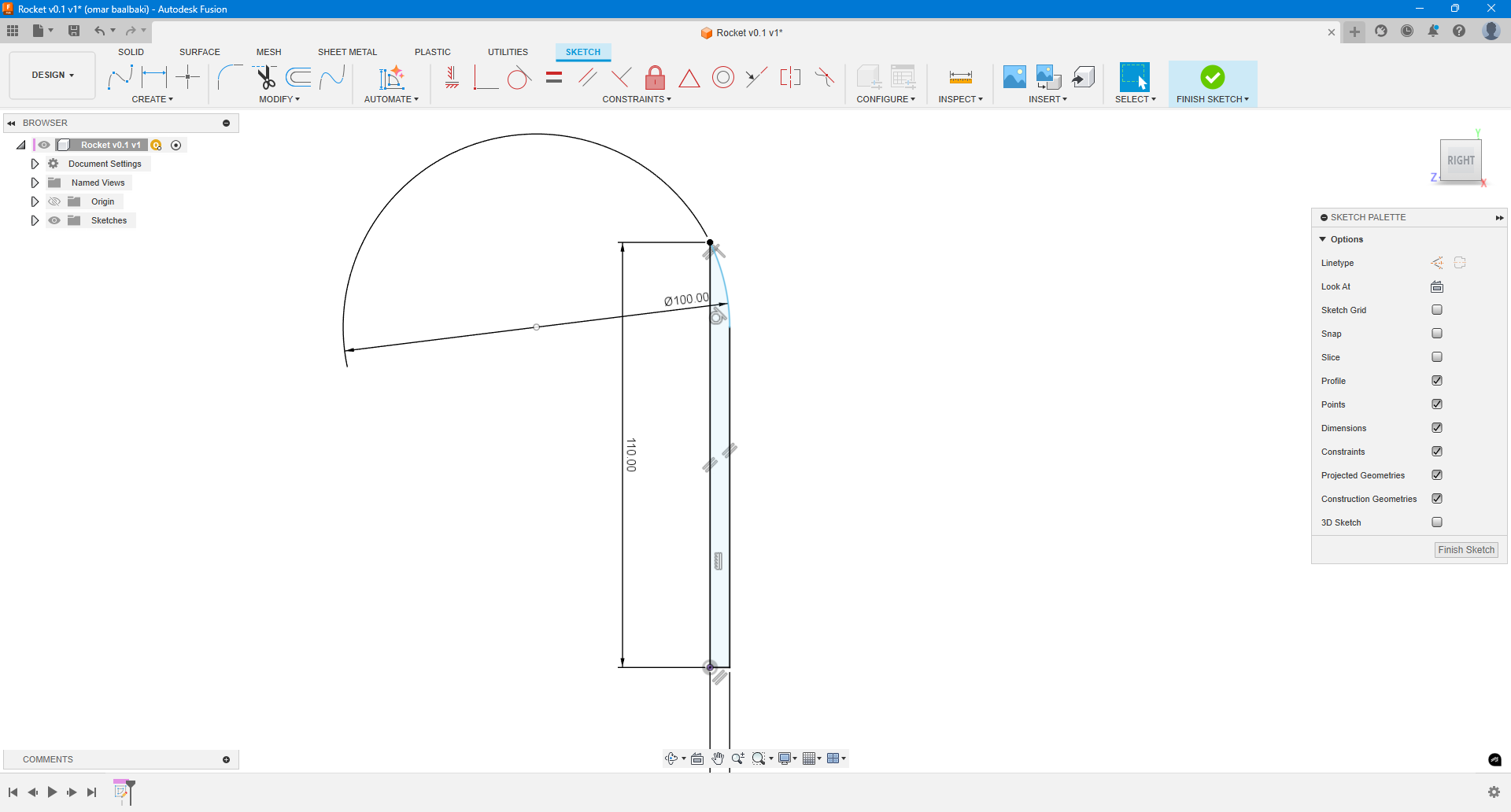
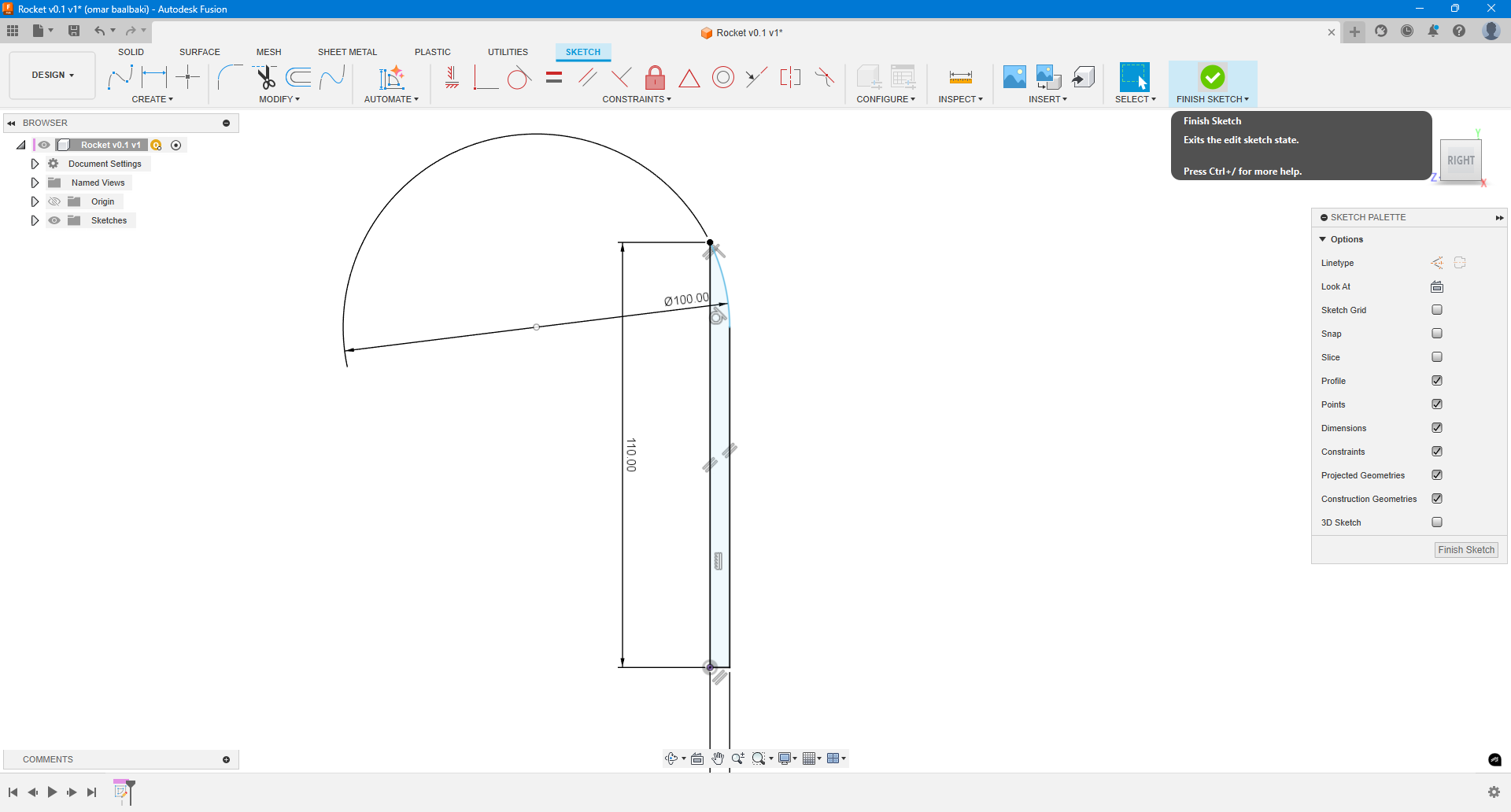
Creating the 3D Body
- Finished the sketch and used the Revolve tool to revolve the profile around a vertical axis.
- Applied the Shell feature from the bottom face to hollow the model.
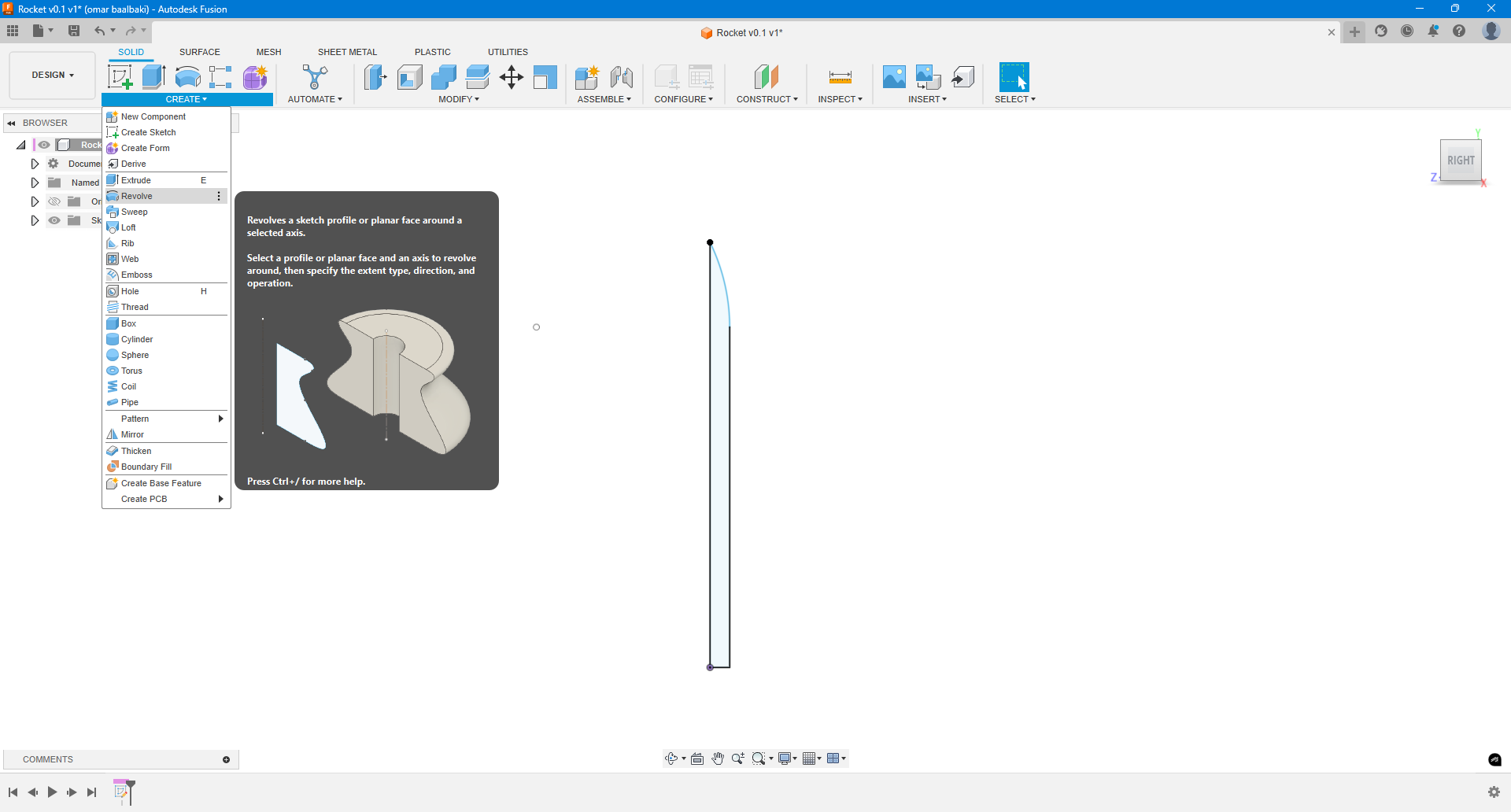
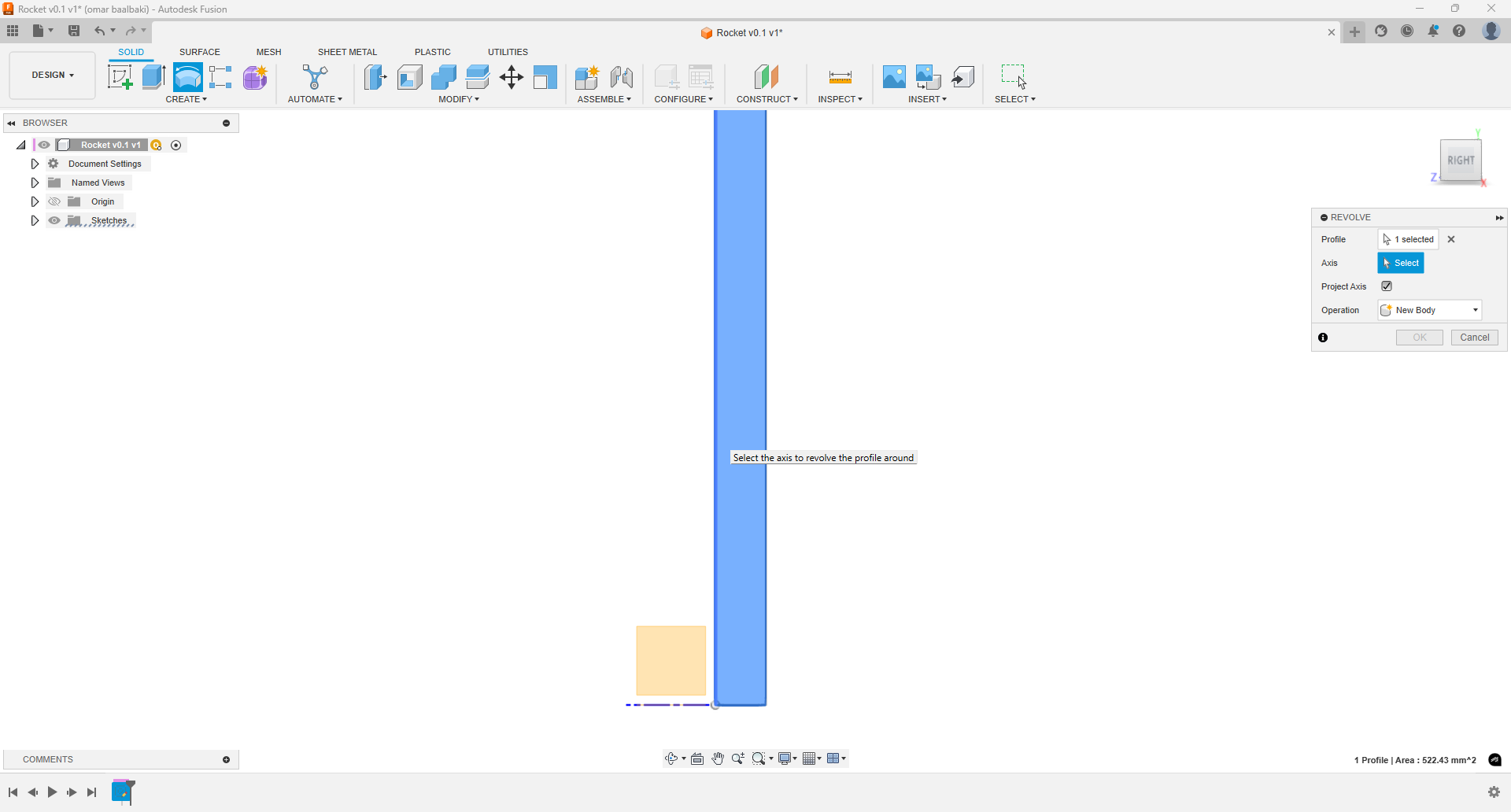
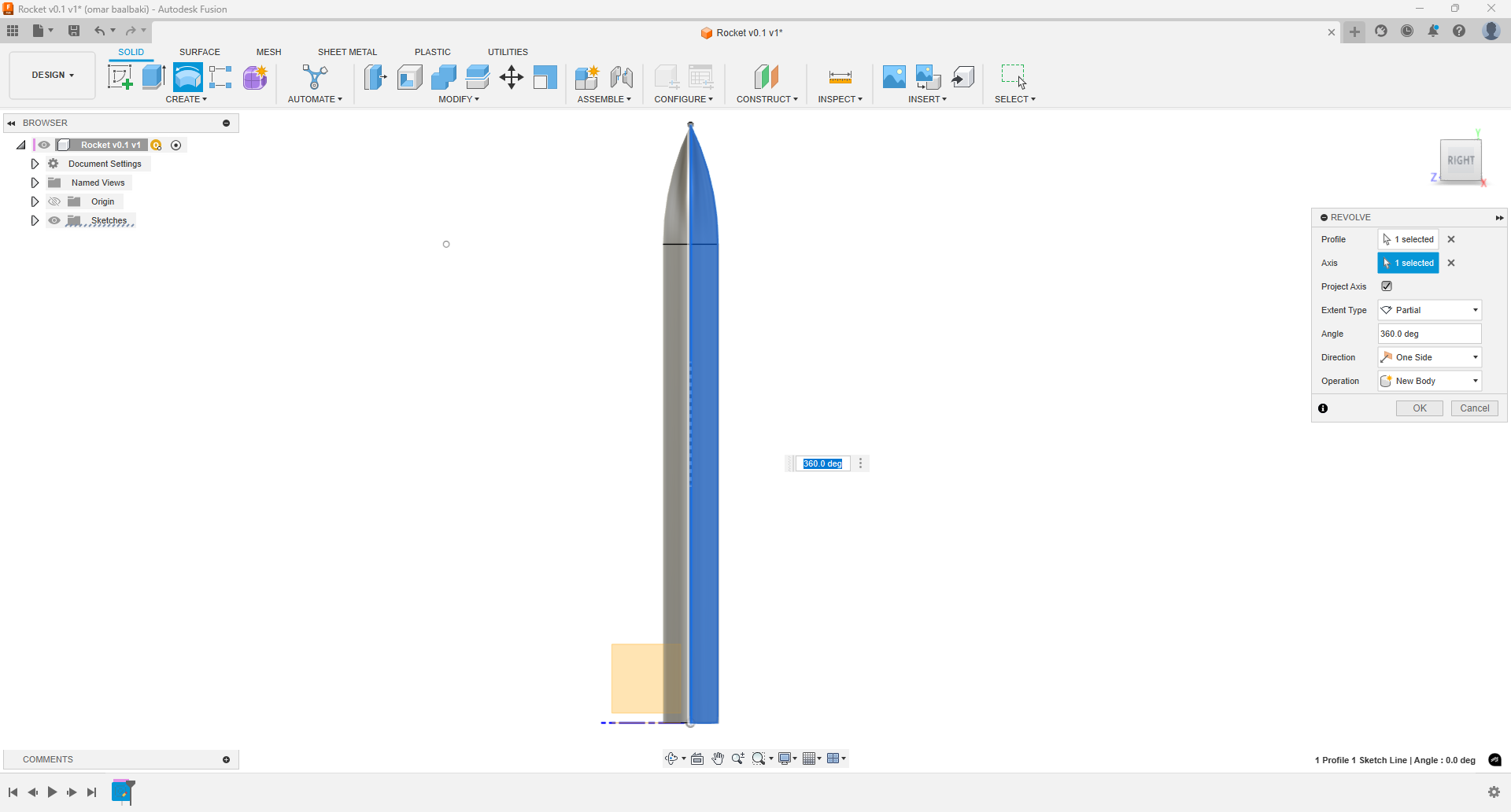
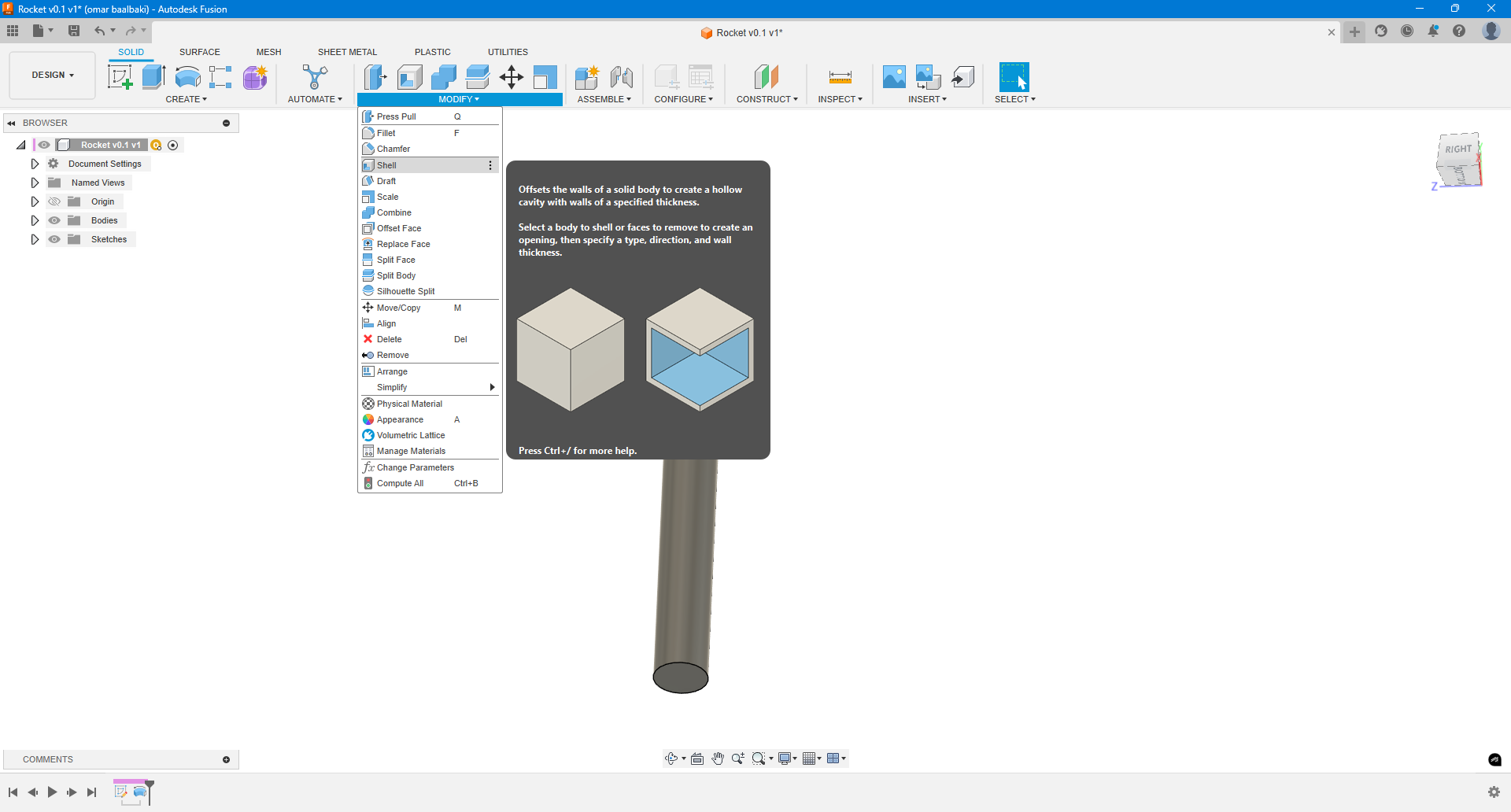
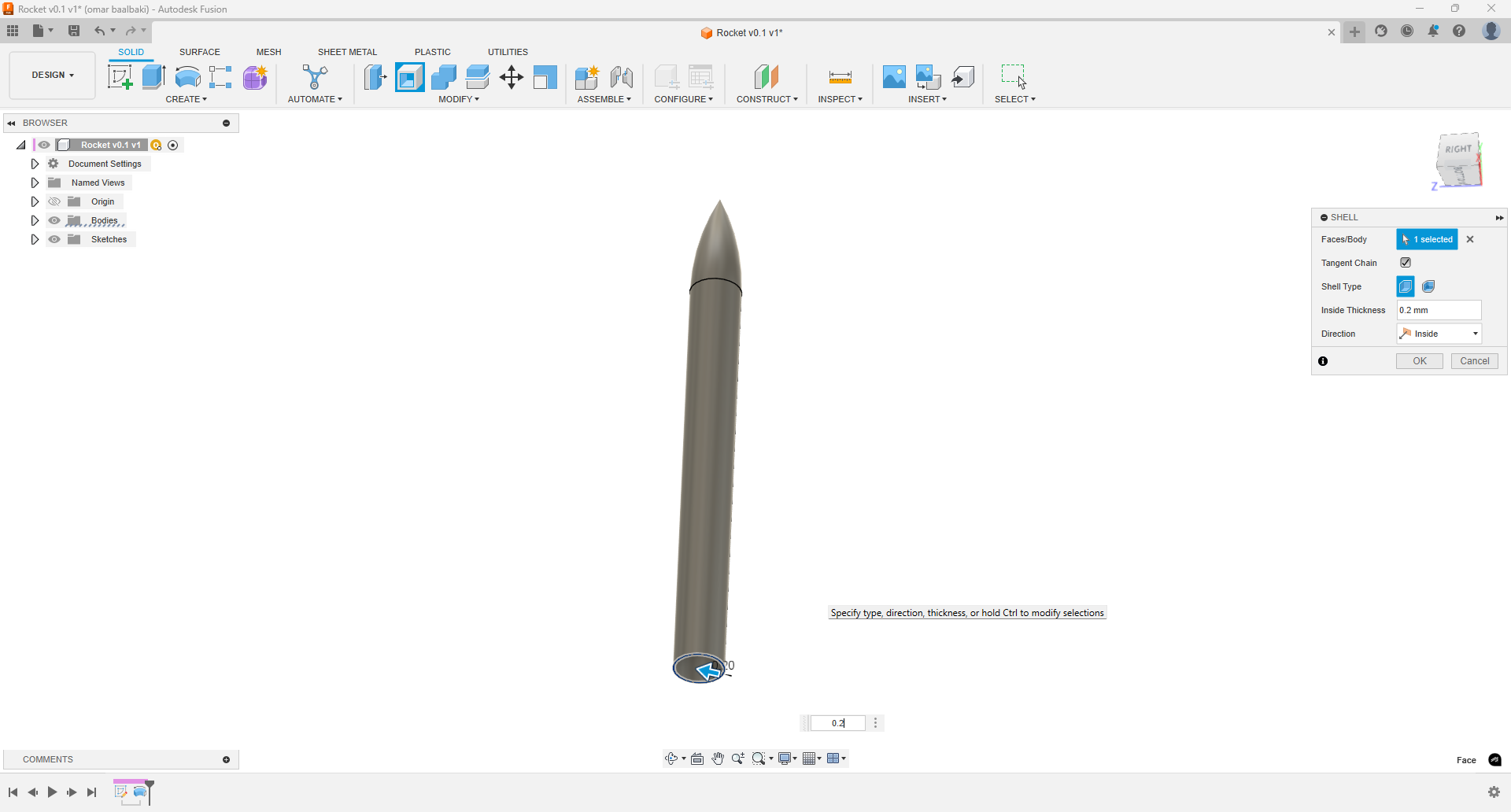
Inspection
- Used Section Analysis from the Inspect menu to confirm the internal wall thickness and orientation.
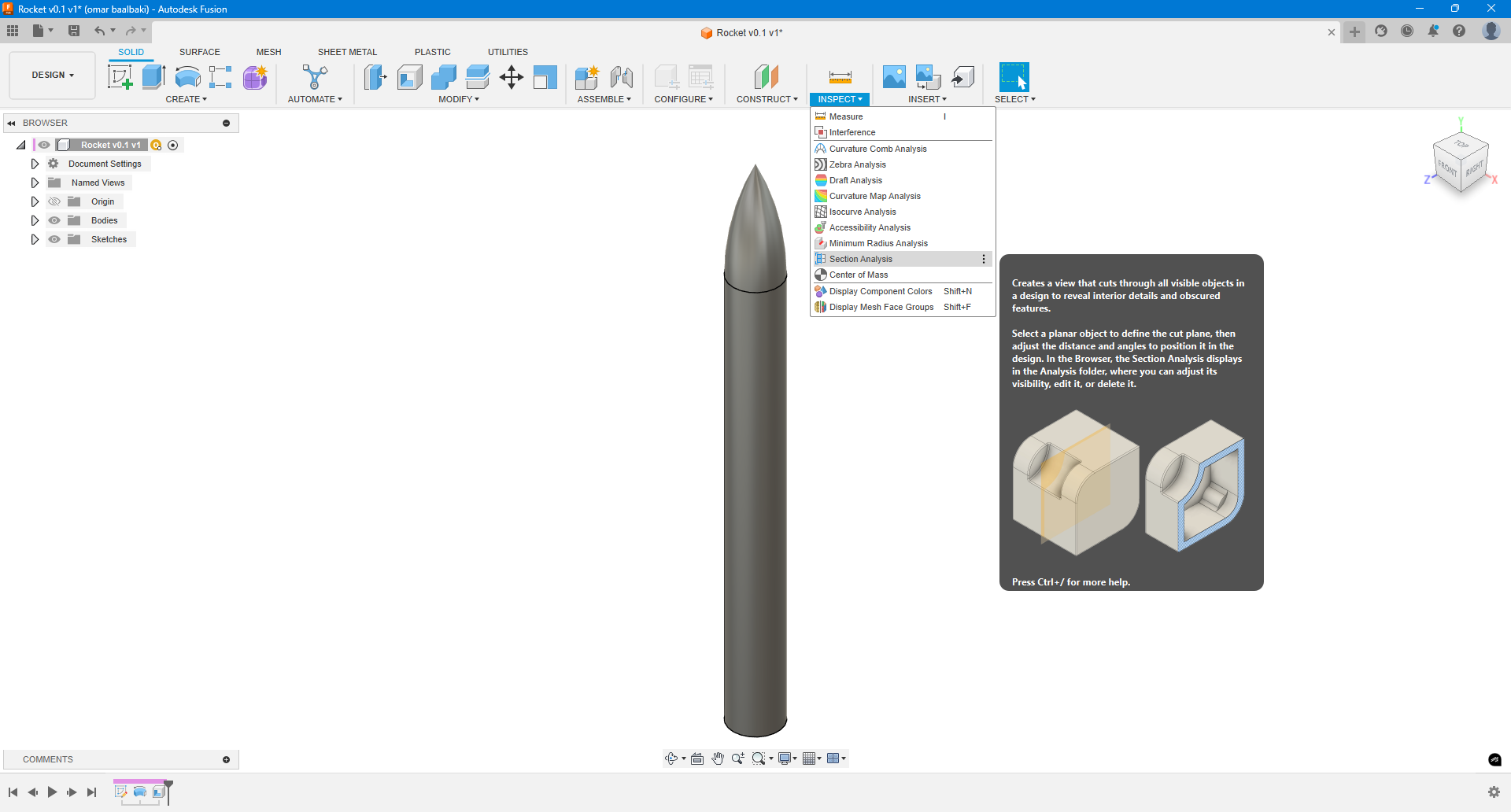
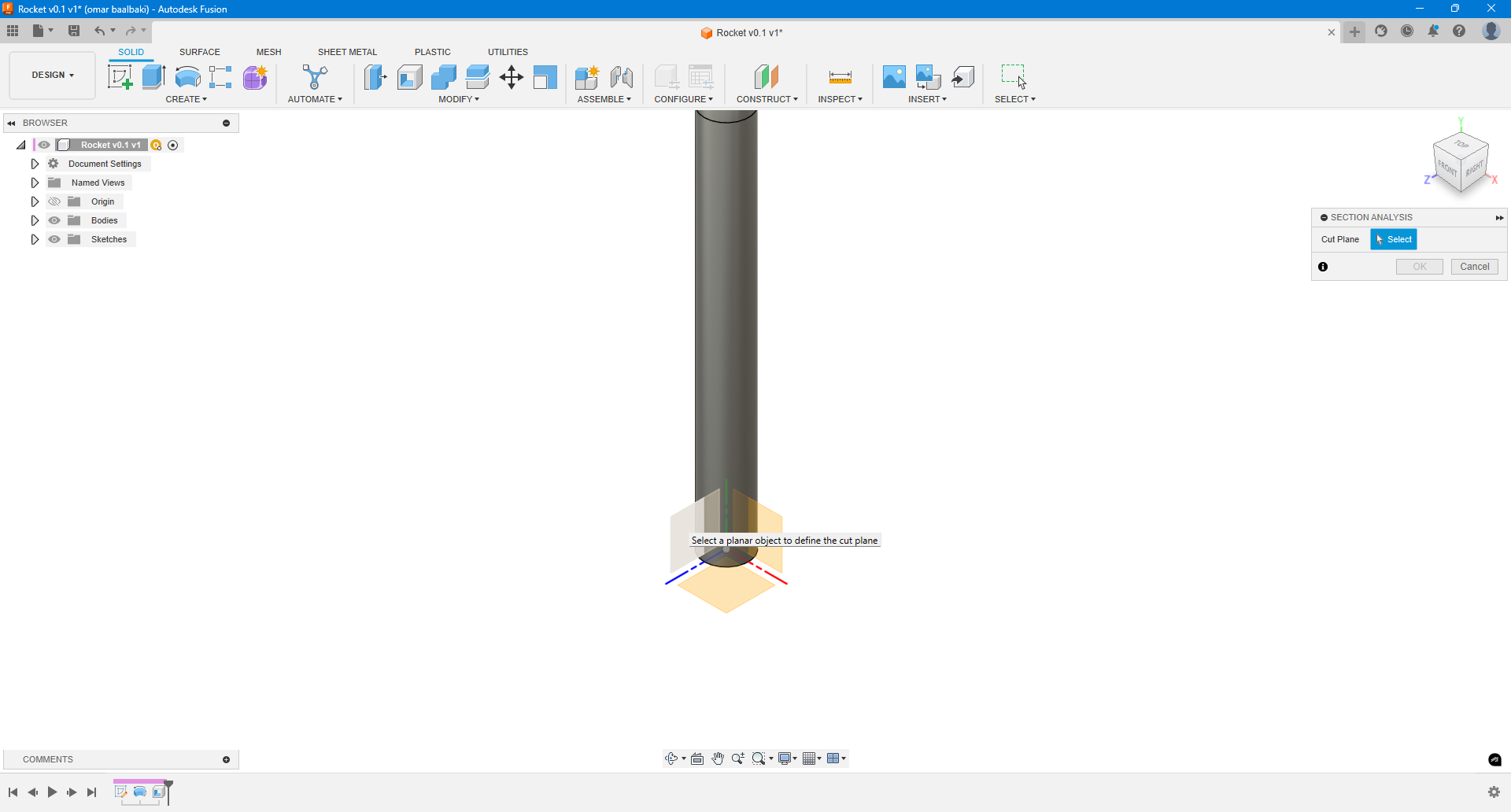
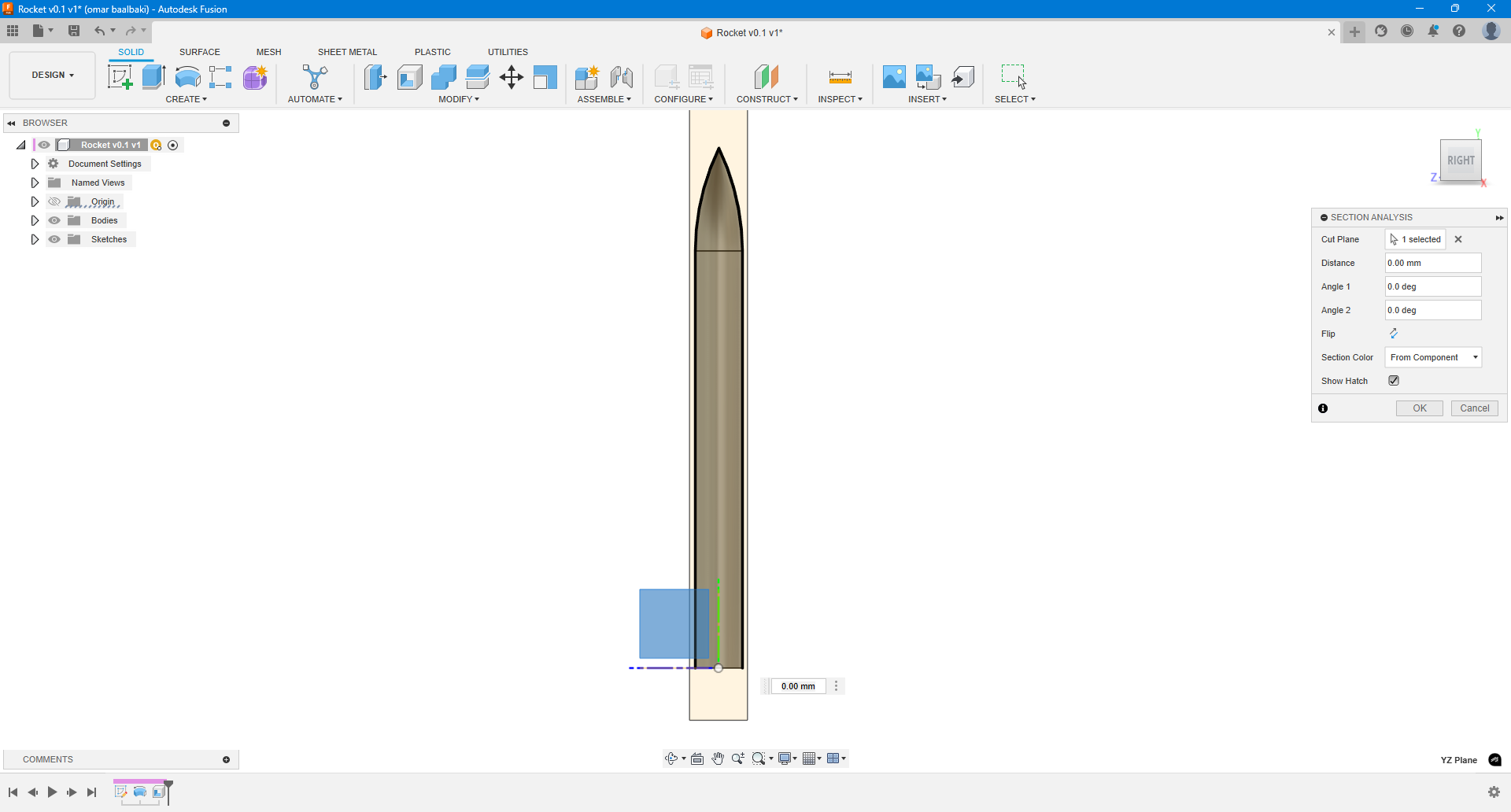
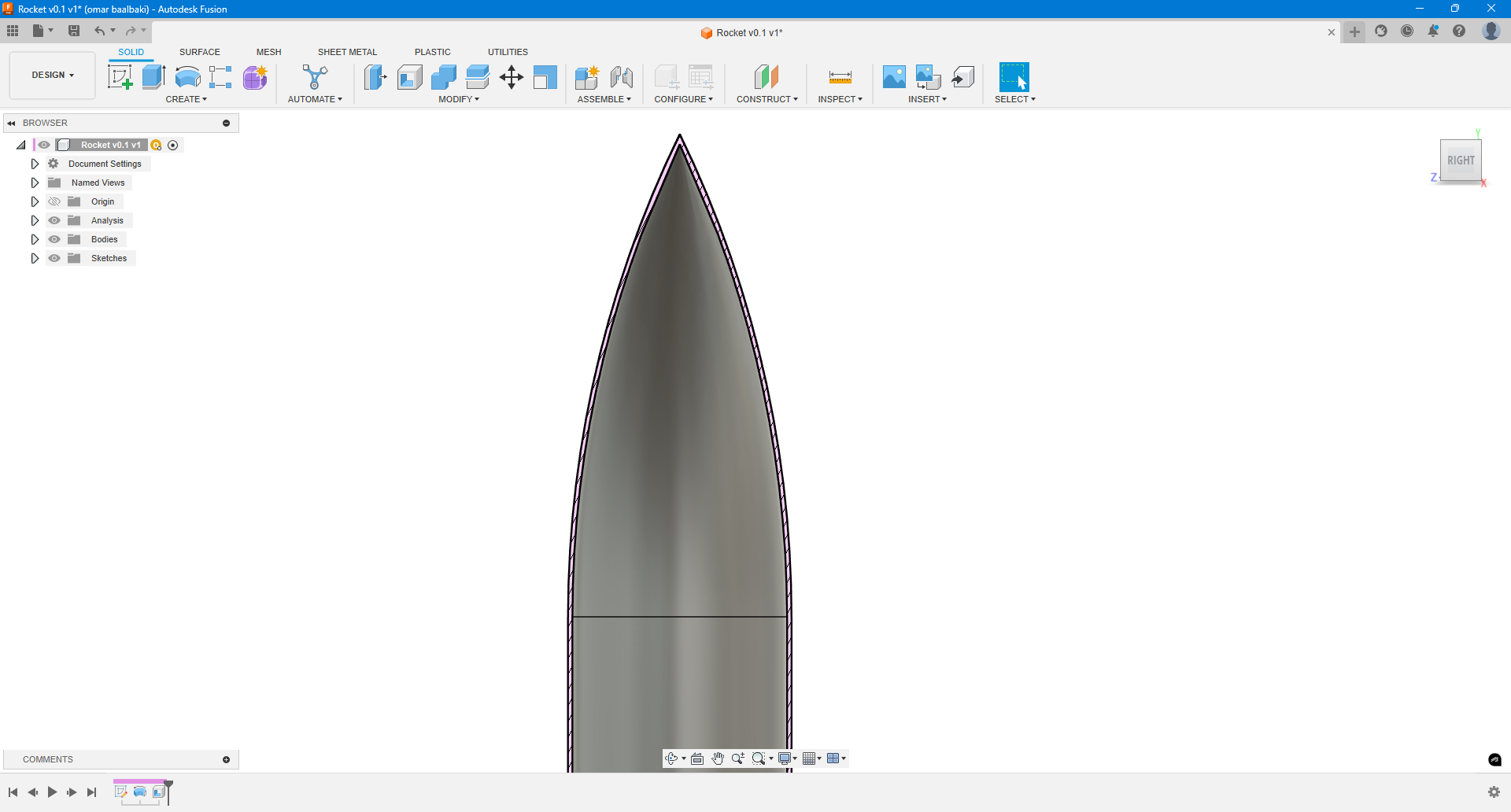
Adding Material Appearance
- From Modify > Appearance, dragged a carbon fiber texture onto the rocket body.
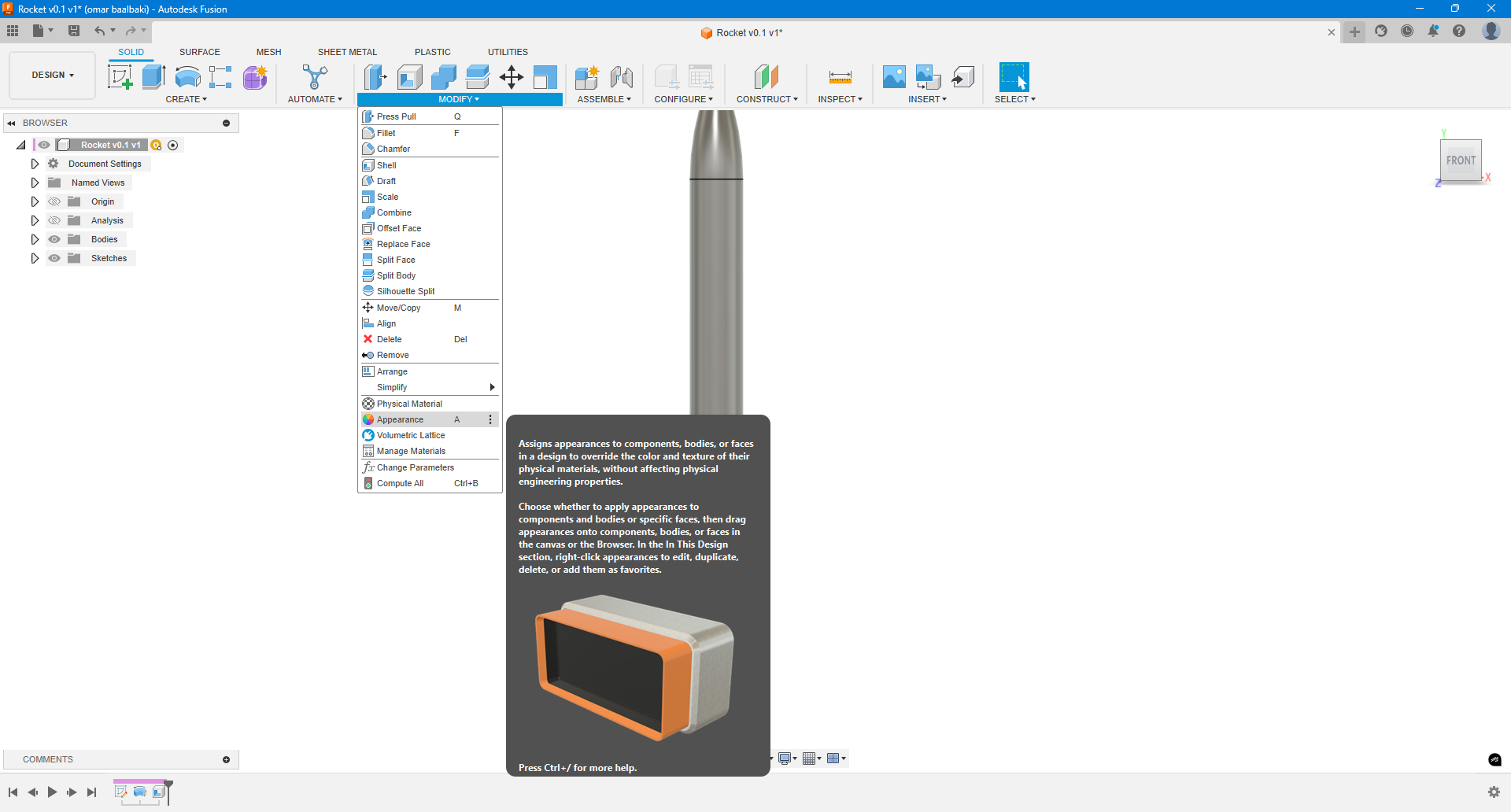
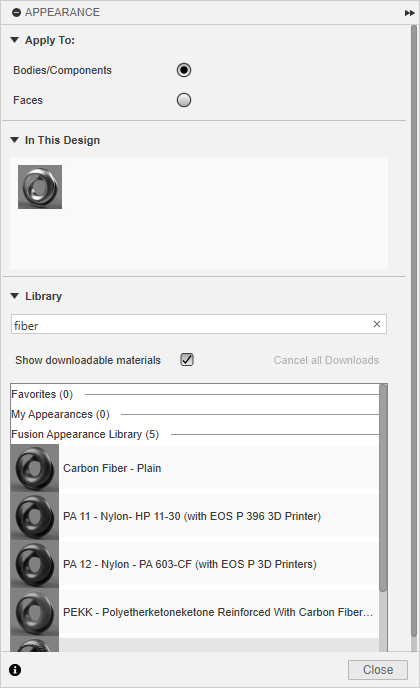
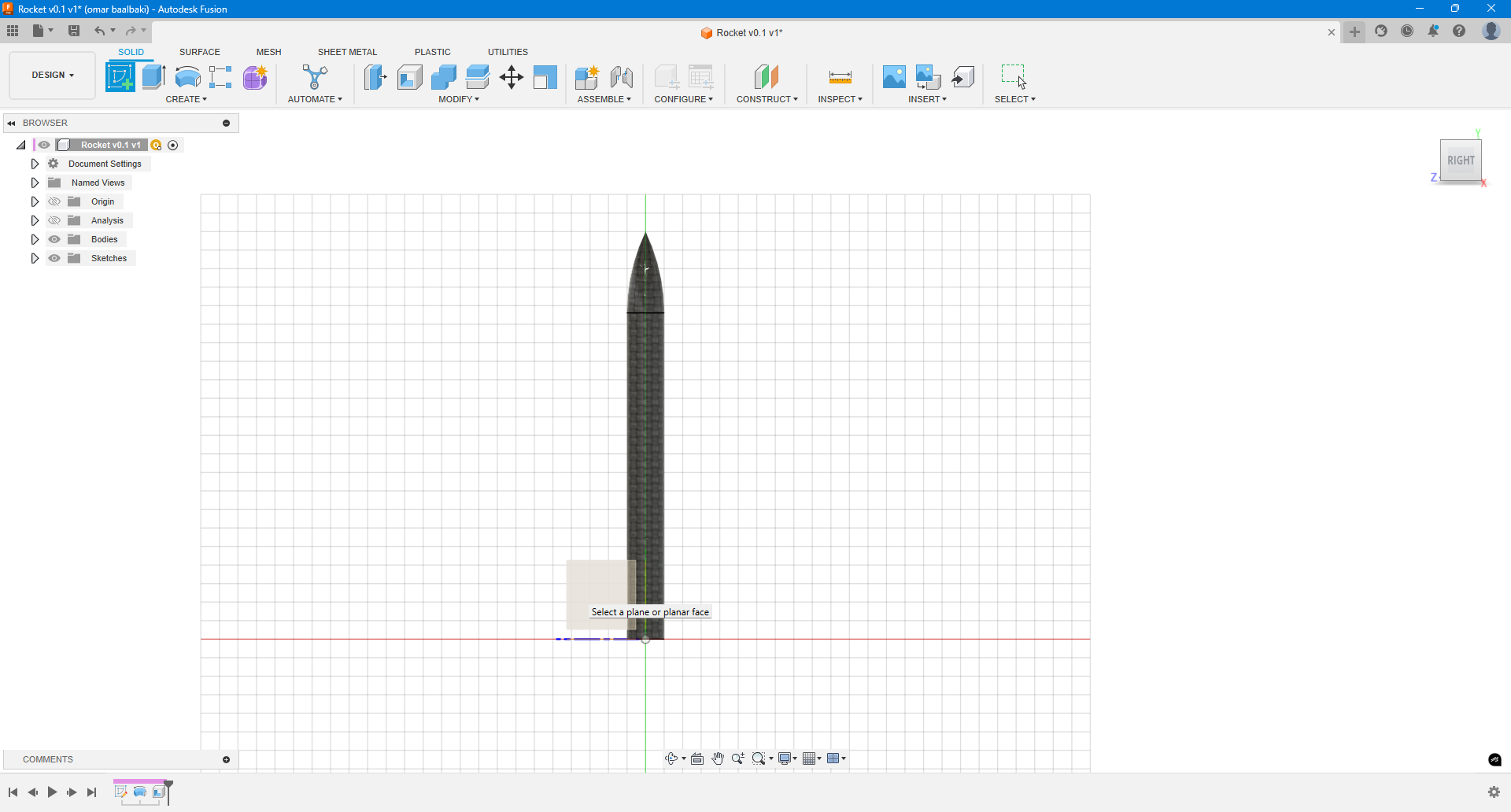
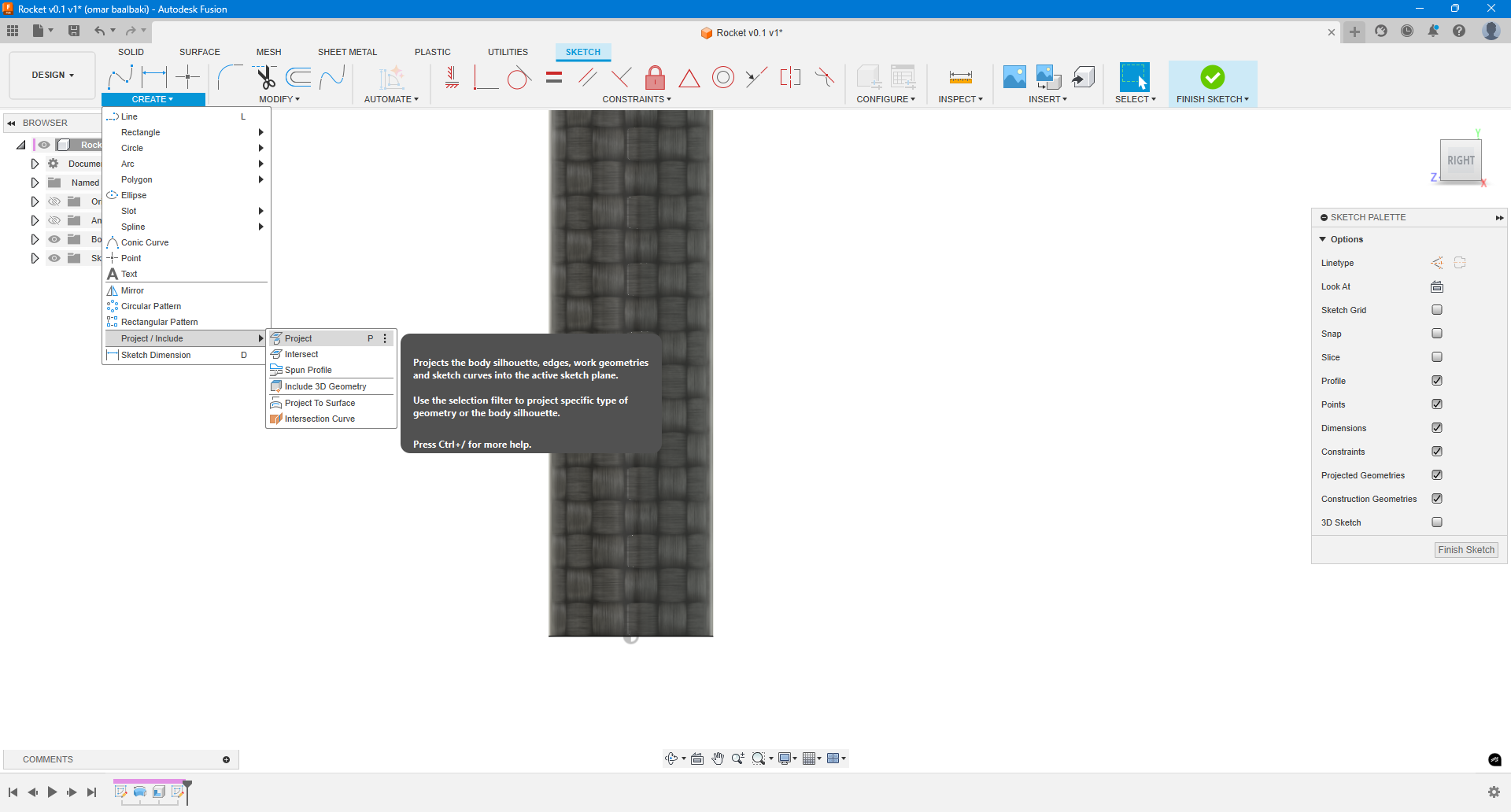
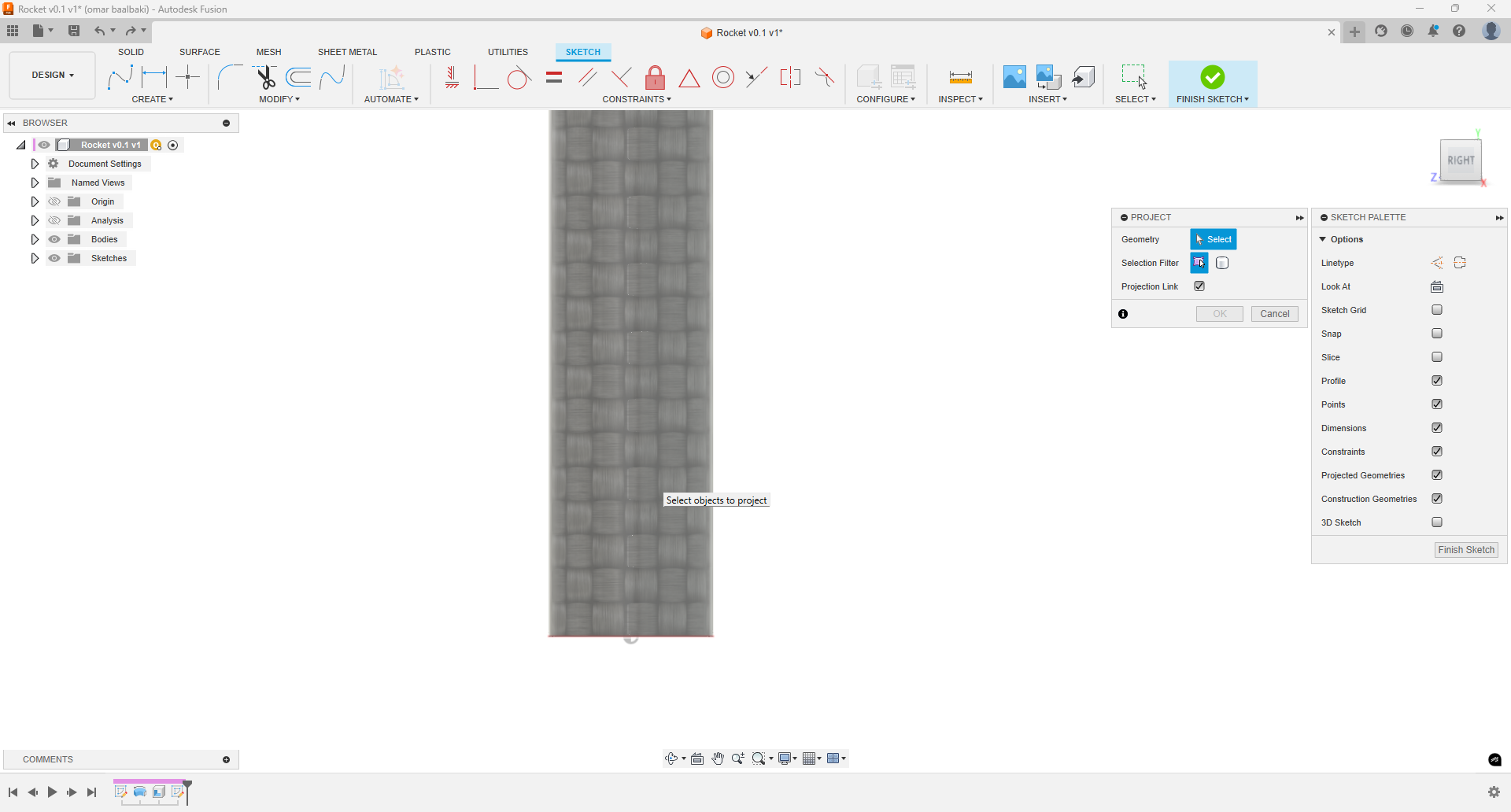
Designing the Fins
- Created a new sketch on a side plane.
- Used the Project tool to capture reference edges from the rocket body.
- Sketched a fin and exited the sketch.
- Used the Extrude tool, chose Symmetric direction, and set the thickness.
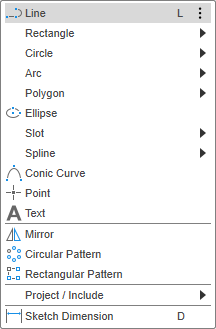
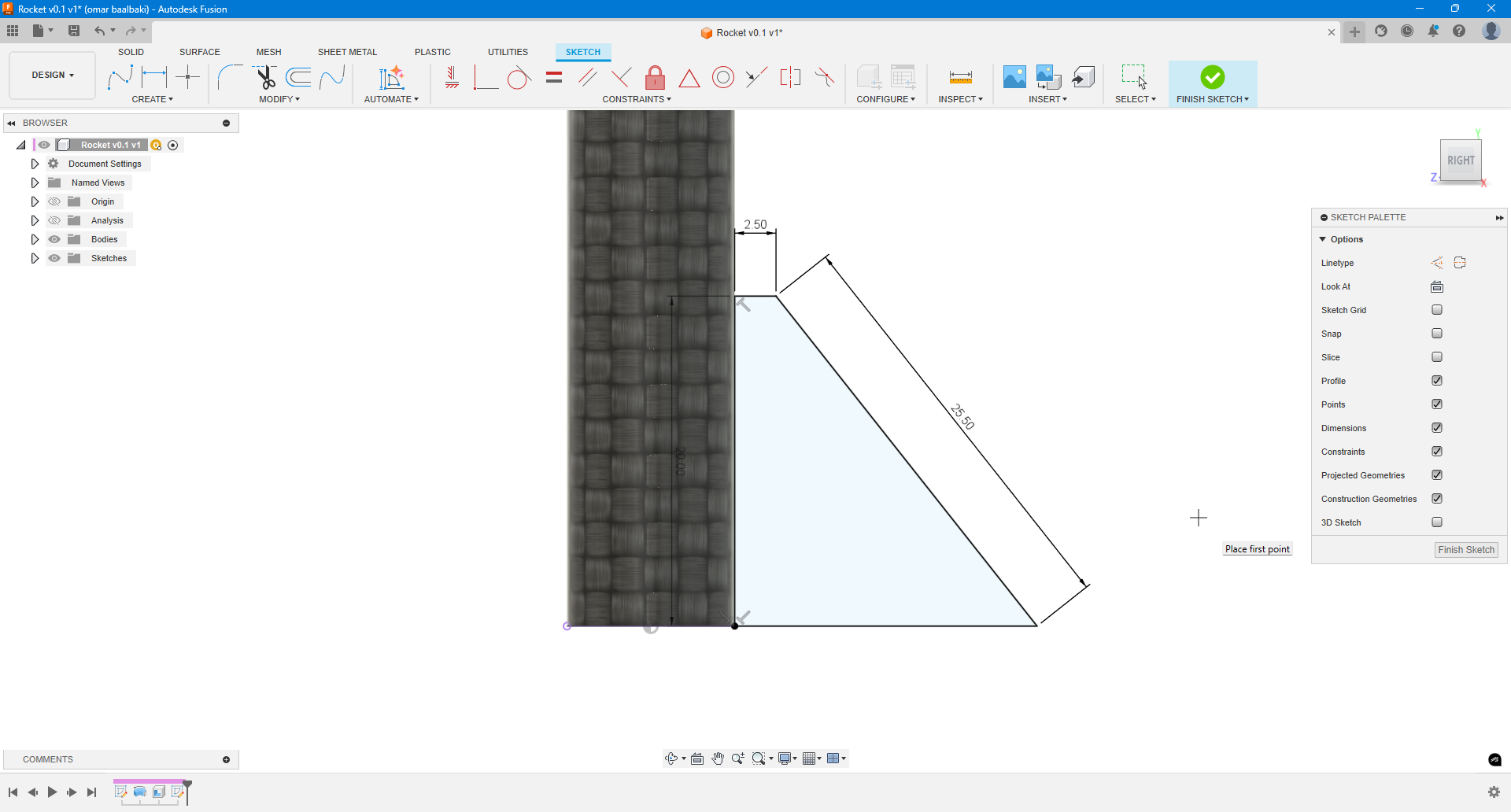
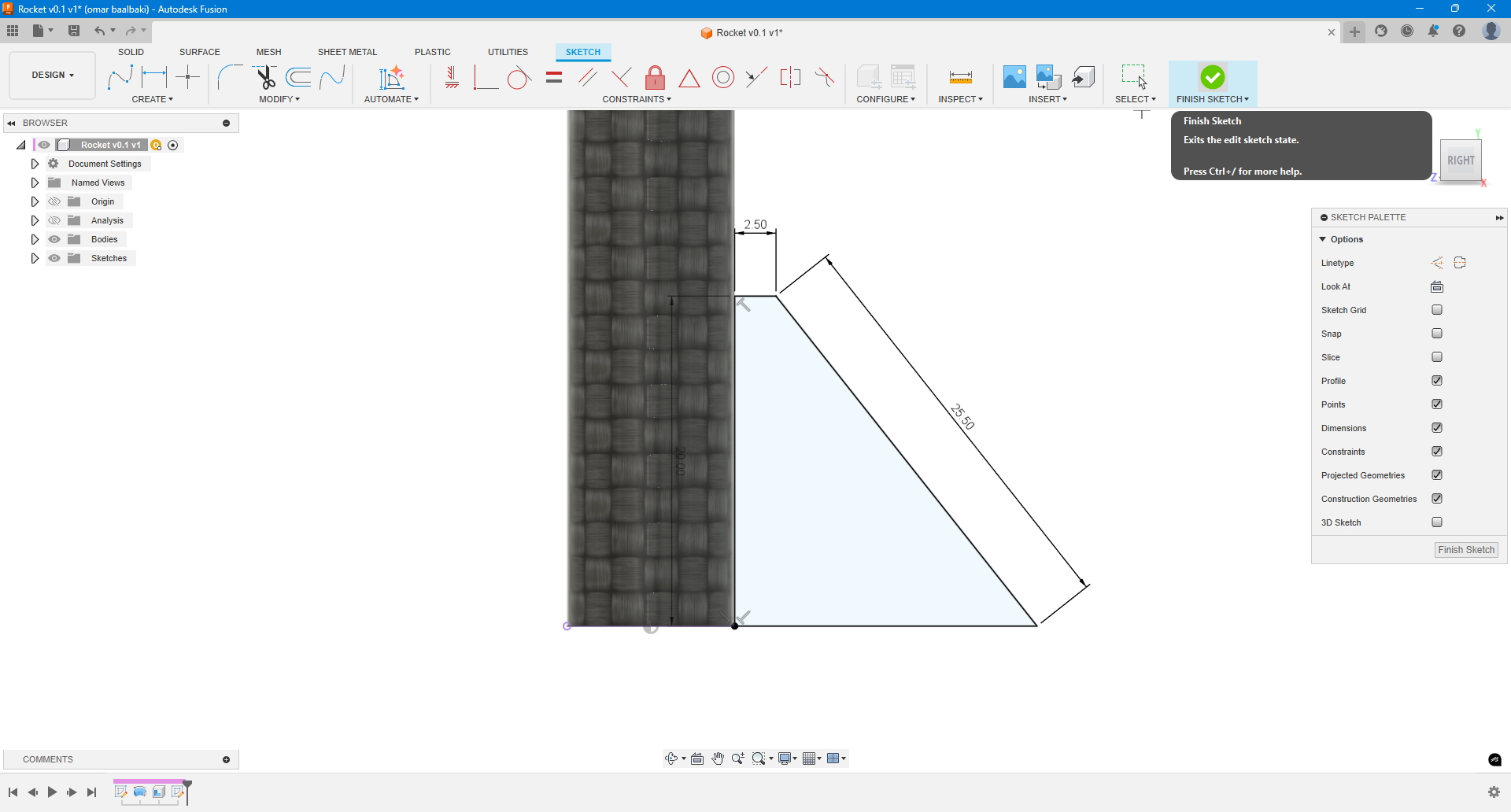
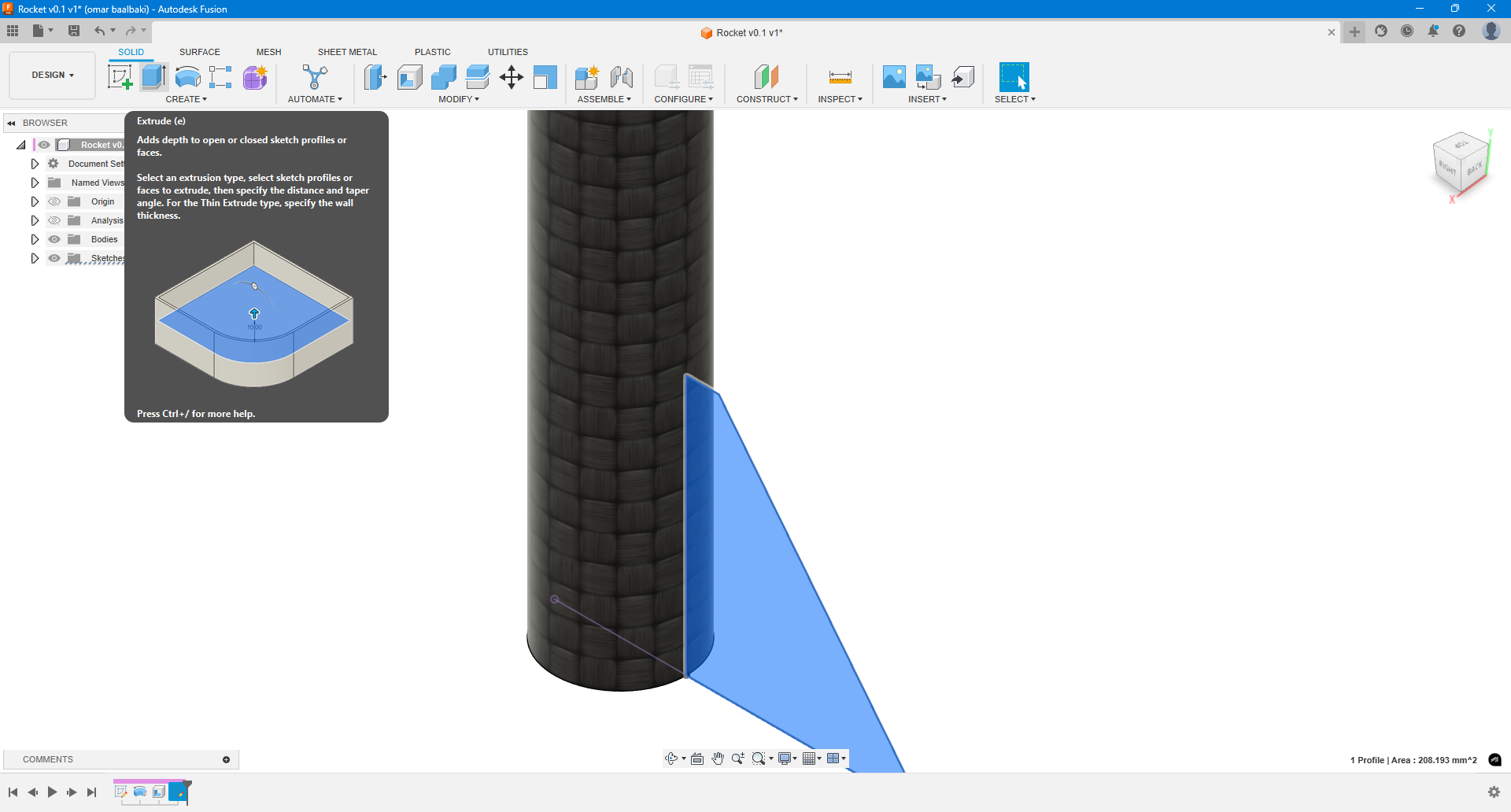
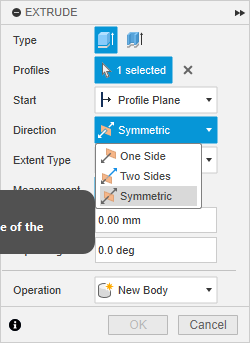
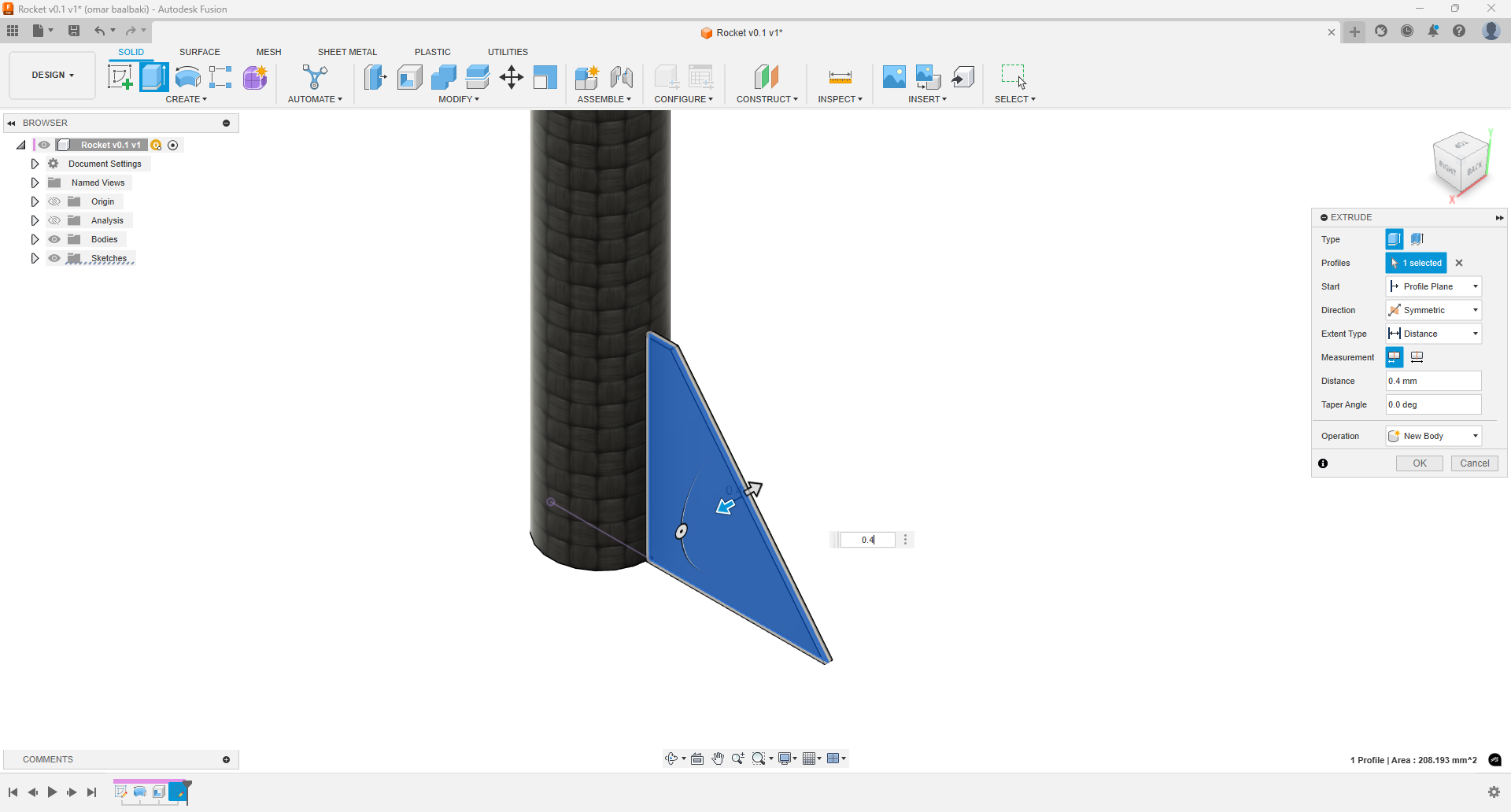
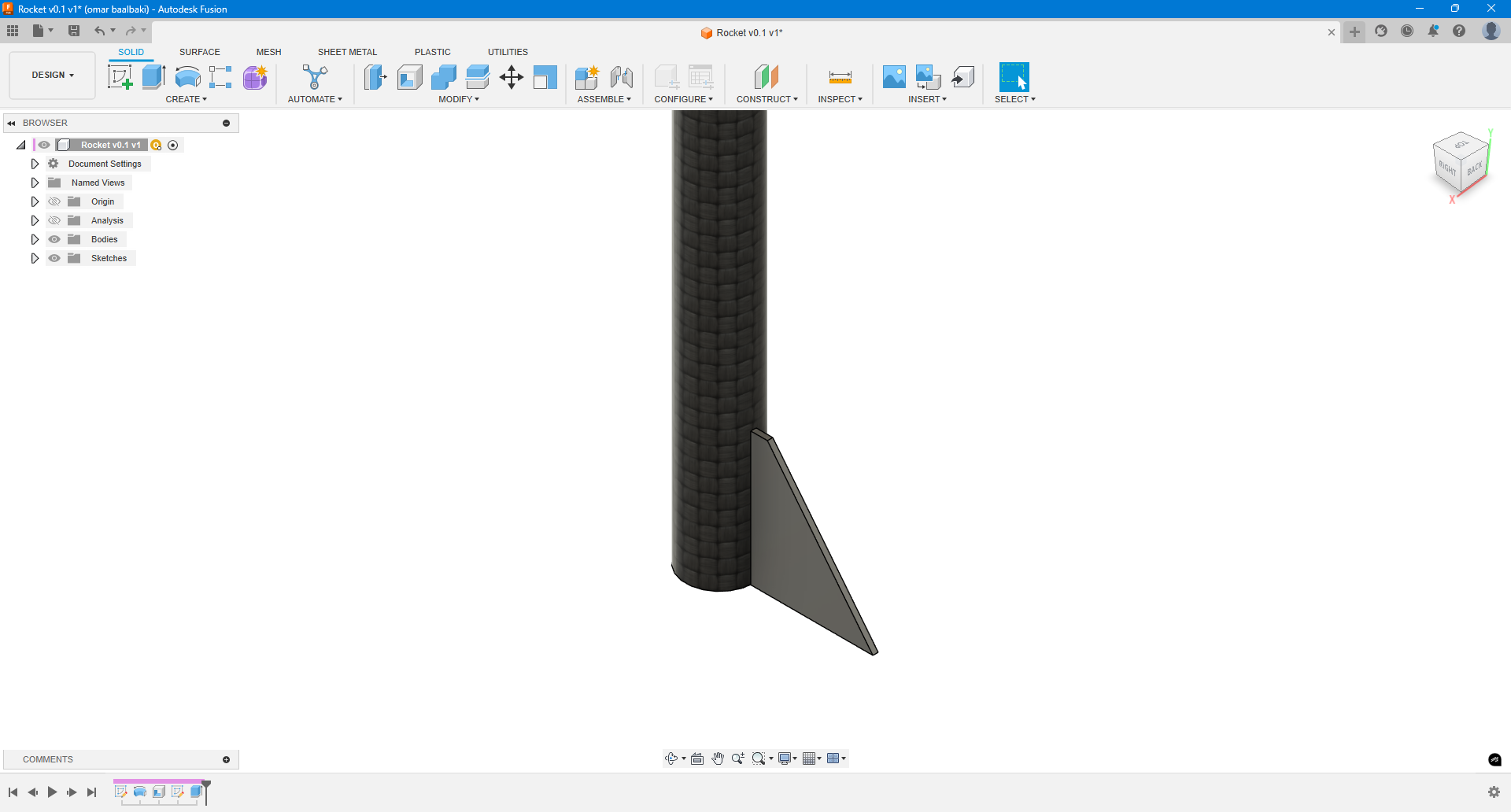
Patterning the Fins
- Selected Create > Pattern > Circular Pattern.
- Defined the axis of rotation and chose 4 instances to evenly distribute fins around the rocket.
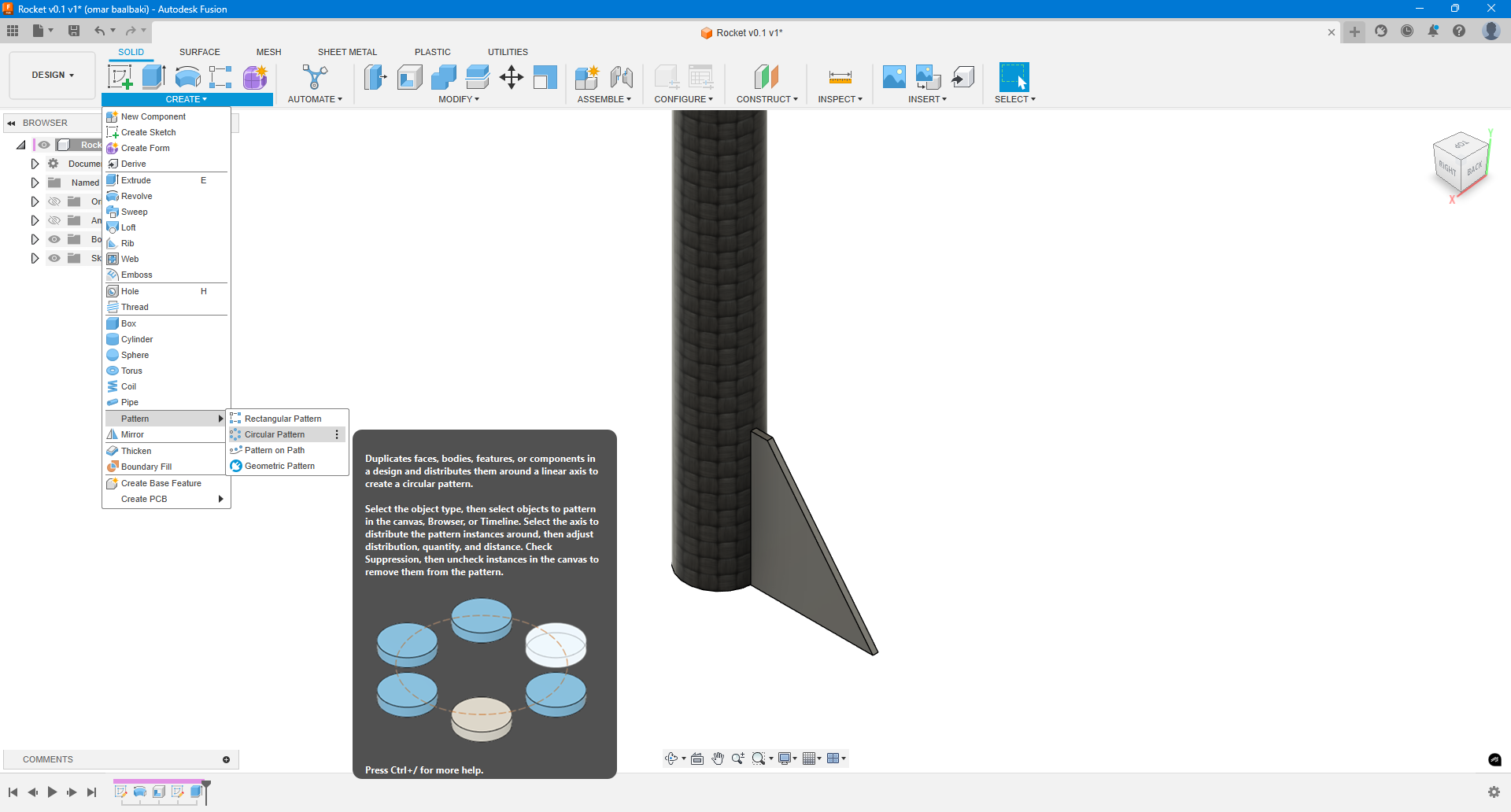
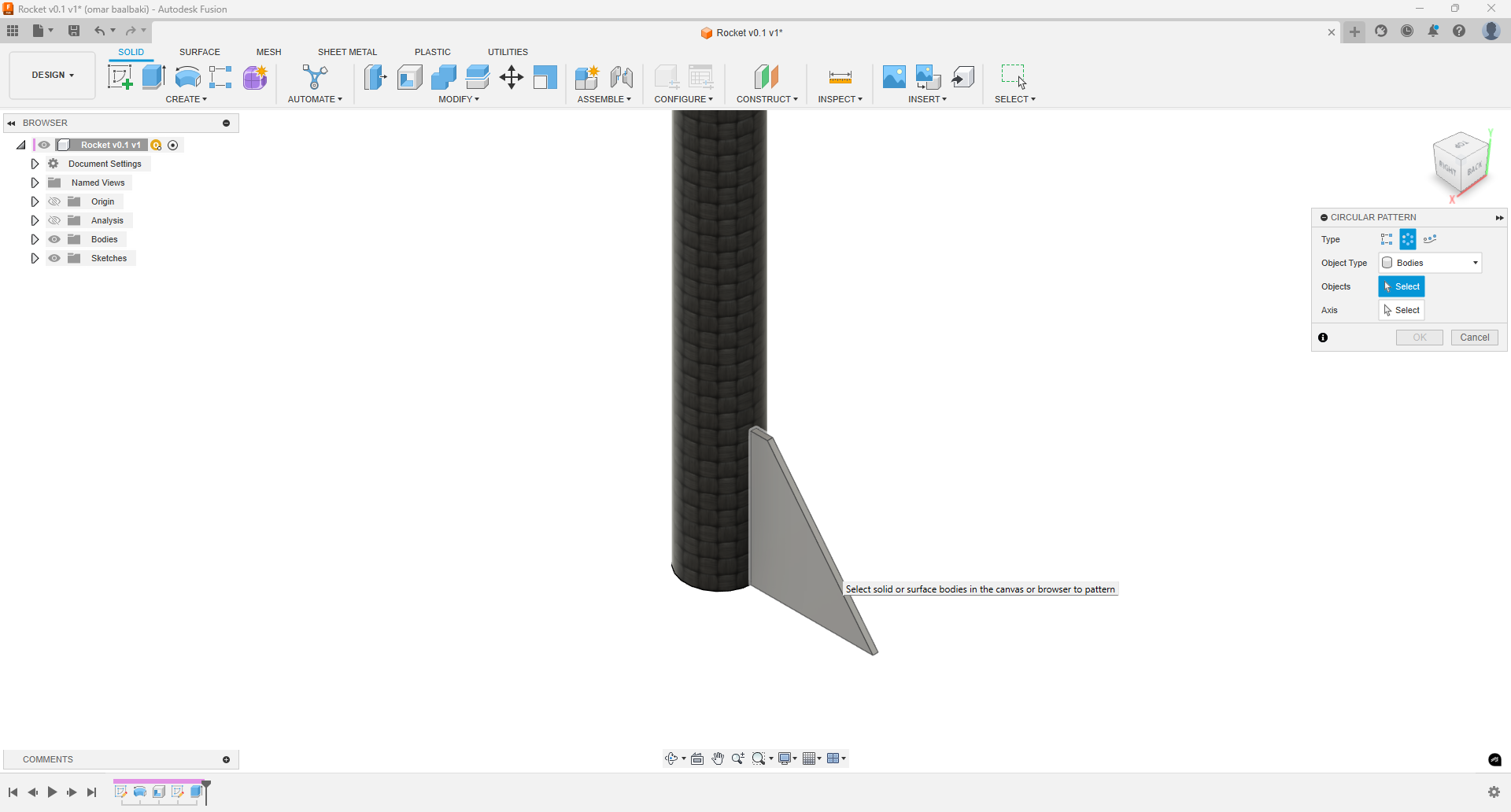
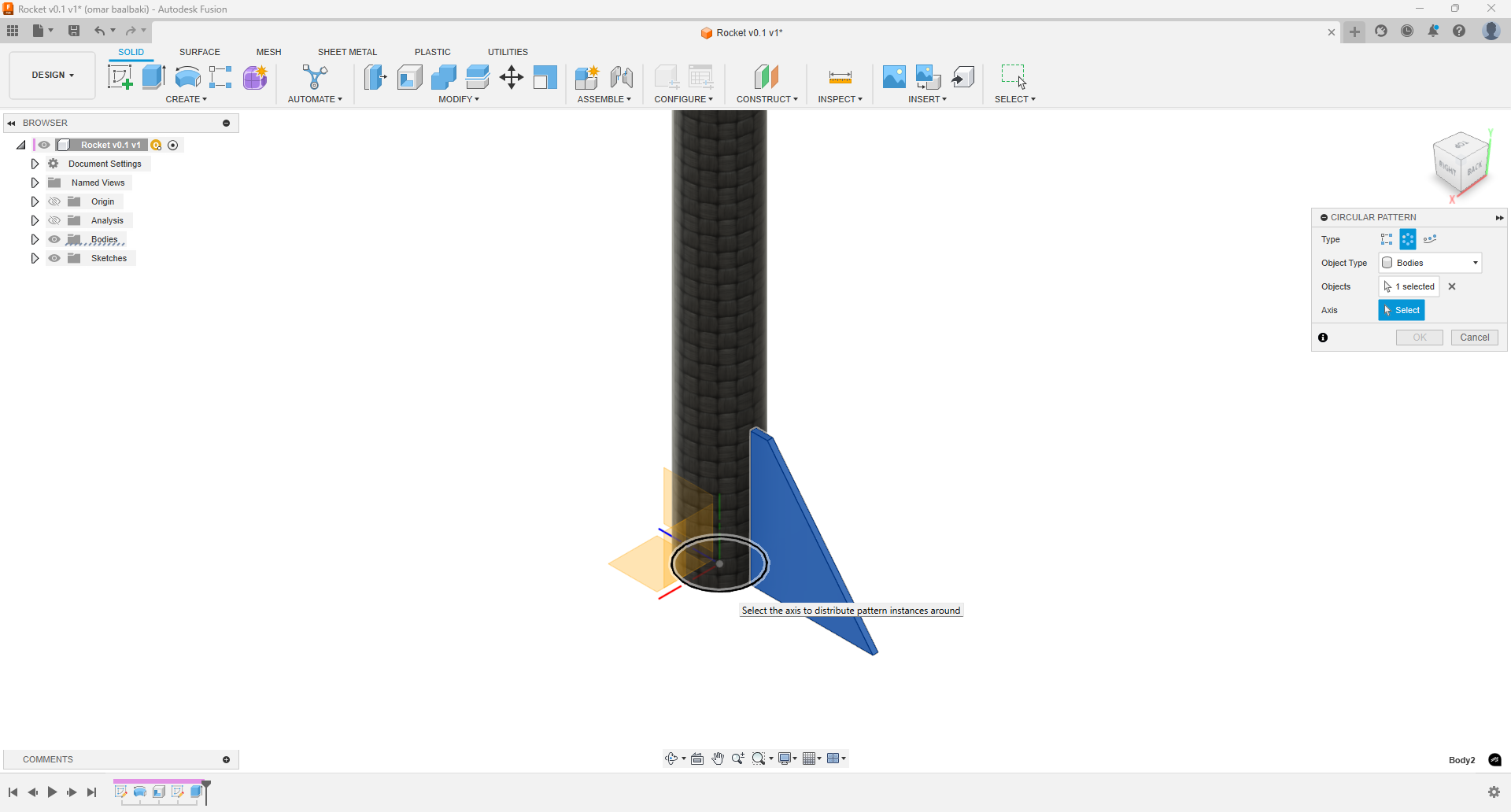
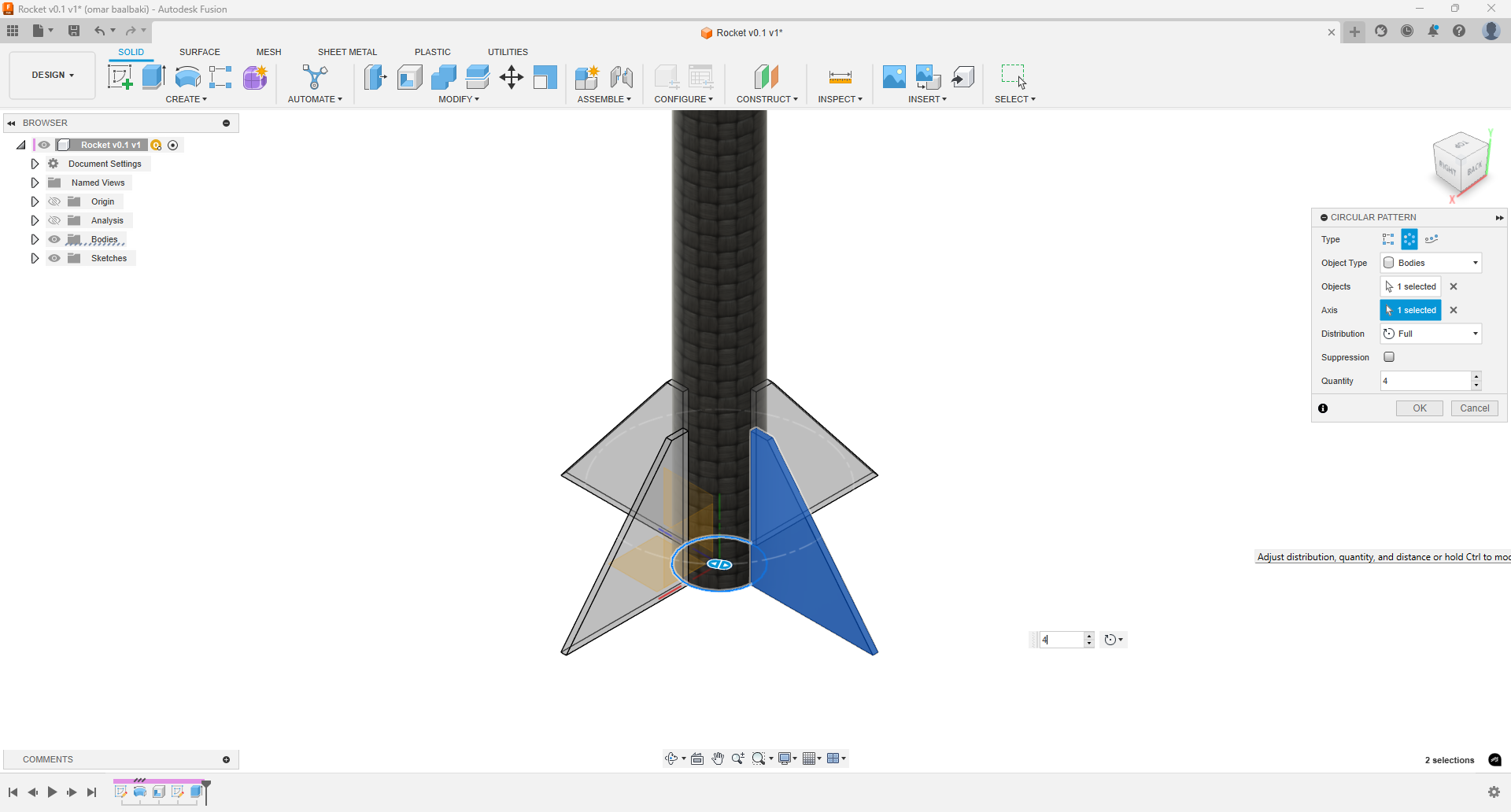
Final Touch
- Applied ABS plastic appearance to the fins using the Appearance tool.
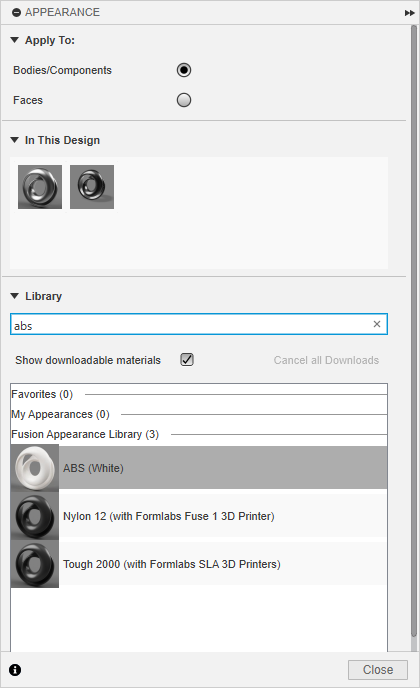
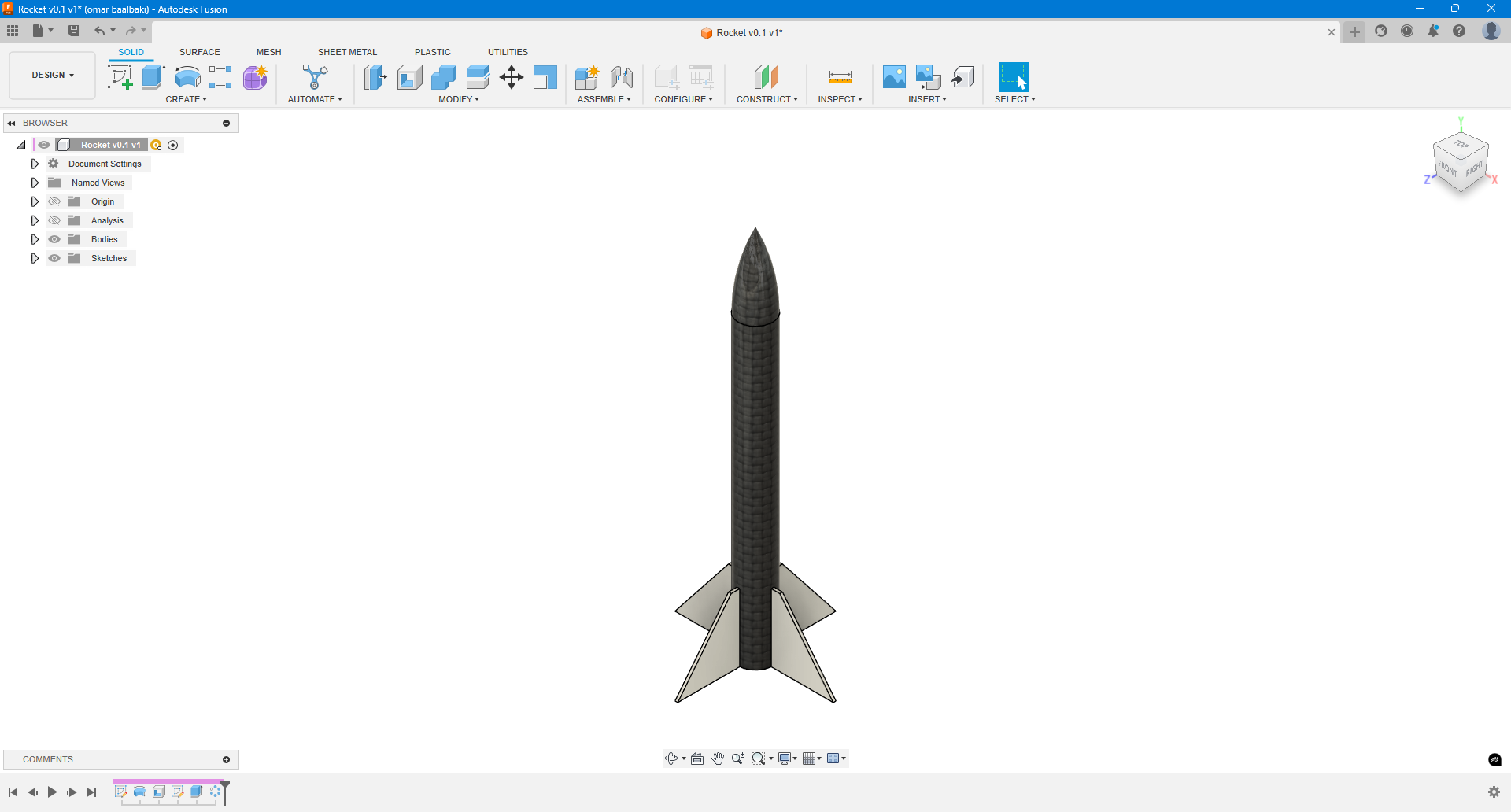
Learning Outcome
Through this exercise, I reinforced essential CAD concepts in parametric design using Fusion 360. I practiced sketching precision, 3D features like revolve and shell, and complex tools like patterning and section analysis. I also learned how to create functional, symmetrical parts with reference geometry, and apply realistic material finishes. This design will act as a proof of concept for the rocket body in my final project.
